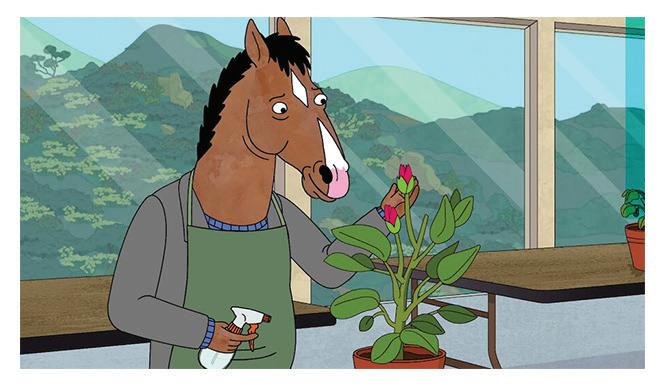about the importance of protecting the First Amendment right to free speech.
PAGE 5 IN-DEPTH
Read about district transparency and shedding light on a teacher incident at Fletcher.
PAGE 8


Henry M. Gunn High School

about the importance of protecting the First Amendment right to free speech.
PAGE 5 IN-DEPTH
Read about district transparency and shedding light on a teacher incident at Fletcher.
PAGE 8


Henry M. Gunn High School
Eanam Maor Features Editor
In April 2023, following a Paly shelter-in-place, Palo Alto police arrested a student for posting a note with a shooting threat, the City of Palo Alto reported. According to Palo Alto Online, this September, The Primary School in East Palo Alto experienced a lockdown and search following an anonymous call threat about a school shooting. In the same month, a Menlo-Atherton student reported a tip based on a social media post that contained “detailed threats” of a potential shooting, prompting both Menlo-Atherton High School and a nearby school to begin a shelter-in-place. Police detained the student responsible, ABC News reported.
The California School Board Association reports that the number of school shootings in California has increased by 2100% from 1970 to 2022. With firearms being the leading cause of death for children and adolescents in the nation, according to Governor Gavin Newsom’s website, actively refining and maintaining emergency preparedness in schools has become even more necessary. These recent “close call” events in the Bay Area, all in a less than five mile radius away from Gunn, have localized this issue, potentially urging for maintenance of safety procedures and protocols on the district level.
PAUSD’s current safety and security measures are outlined in the Workplace Violence Prevention Plan, designed by administrators, directors, managers, supervisors and foremen, all of whom have the authority to implement such provisions. The plan outlines the WVPPA’s corrective measures alongside School Safety and Resilience Team Members to prevent workplace violence, including school shootings. Quarterly safety meetings with employees and representatives are held to review workplace hazards, which could include discussions, brainstorming and review of recent incidents and the procedures.
PAUSD Manager of Safety, Security & Disaster Preparedness Mike Jacob works to build a comprehensive safety framework for PAUSD schools. According to Jacobs, this framework is rooted in the principle of emergency management, or an organized, comprehensive approach of preparation, response and recovery to minimizing the impact of disasters. He emphasizes the approach’s balance of physical security measures, mental health initiatives and community engagement.
“While we maintain a strong focus on emergency protocols, our emphasis is equally on early intervention and community collaboration to prevent crises
before they occur,” Jacobs wrote in an email.
Prioritizing mental health and connection are a key aspect of preventing disasters before they occur. Jacobs highlights the importance of building strong relationships, fostering trust and ensuring that every student has access to help, either from adults or resources to to keep PAUSD schools safe, specifically from gun violence. He mentioned a multidisciplinary threat assessment process that is used by PAUSD to identify and address suspicious behavior prior to a disaster.
“School counselors, administrators and mental health
Source: Self-selected survey sent out to Gunn students by The Oracle from Oct. 16 to Oct. 27 with 107 responses.
professionals work together to support students in need before things escalate,” Jacobs wrote in an email.
In addition, PAUSD prioritizes preparedness, consisting of staff training and school wide drills, along with partnerships to assist with safety and support. Annual training for PAUSD staff focus on workplace violence prevention and response, including the Run, Hide, Defend protocol. He also mentions the strong partnerships local first responders, such as PAPD and Stanford DPS that PAUSD maintains to provide access to support to make “more timely, data-driven, and risk-informed decisions”.
“(The annual training for staff) helps us to strengthen our capabilities and pinpoint areas for improvement, (while these partnerships) serve as a strong layer of safety and support to our district,” Jacobs wrote in an email.
District policies are drafted by the Board Policy Review Committee. The committee receives legal updates from the state to review and recommends updates to district policies. After being proposed by the BPRC, policies are


formally adopted by the school board — both of which are conducted in public sessions, according to Jacobs.
“In matters of safety, both (policies and protocols) are guided by state regulations and shaped by input from subject-matter experts and practitioners in the field,” he wrote.
Along with policies being drafted and adopted in public sessions where the community can stay informed and include input, Jacobs recommends that families share their thoughts or concerns, even anonymously, through Let’s Talk, PAUSD’s online platform.
Within these district policies, each PAUSD site also works to actively improve safety procedures and logistics. Senior Eason Lu, a member of the Student Safety Committee worked with Assistant Principal of Facilities Dr. Mycal Hixon to create a plan to “address campus risks, prepare for emergencies, and create a safe, secure learning environment for students and school personnel.” According to Lu, the committee is addressing the biggest concern he has heard regarding emergency procedure at Gunn: the similarity in tone of emergency and regular announcements.
“People often tell us that they don’t know when it is an announcement, or when it is a lockdown message,” he said. “People are generally scared every single time they hear any of the announcements, they come over the PA. We are working to address that (by working) to differentiate the attention to each message have, like if it’s just a normal message, or if it’s a lockdown message.”
The Sandy Hook Promise found that in four out of five school shootings, at least one other person had knowledge of the attackers plan but failed to report it. According to Lu, one of the most important and often disregarded parts of dealing with gun violence is community responsibility. Under the “See Something, Say Something” campaign which began in 2010, posters were put up around campus that include the link to Let’sTalk for students and staff to report concerns, either anonymously or not. Additionally, teachers, who are all mandated reporters, are also technically a source of open communication and assistance.
“When people report those activities, they’re far more likely to reduce (the) possibility of a school attack,” Lu said. “I think that as a person, I should encourage people to be more vigilant, to be more careful of their surroundings and to report suspicious activity.”
According to Lu, the Student Safety Committee has attempted to communicate this message to the student body but it has faced many difficulties. A potential effective


Olivia Lee Sports Editor
Starting Nov. 11, PAUSD will directly manage its athletic fields and courts, ending a long-term agreement under which the City of Palo Alto had overseen these facilities.
Since 2014, Palo Alto has managed maintenance, reservations for external organizations and public access to the recreational sites across PAUSD schools, including all 24 tennis courts. Currently, the city operates these athletic courts and fields after 4 p.m. on weekdays, weekends and holidays. Under the new plan, PAUSD will assume these responsibilities, including reservations for the community and public.
This change in management marks a turning point in how athletic spaces will be maintained and accessed across the city. While the partnership between the city and district has provided shared opportunities for students and residents, PAUSD officials said that direct management will give the district more flexibility and opportunities to focus on and address school-specific issues, such as running the facilities with a higher level of care.
According to PAUSD Supervisor of Theatre Production and Facility Rental Kyle Langdon, new management will allow the district to better align its facility use with students without compromising public availability.
“This transition allows the district to directly maintain and operate grass fields and tennis courts at the same or higher standard of care for school use, while continuing to make them available to the community,” he said.
Although this decision affects the athletic fields at PAUSD middle schools — Greene Middle School and Jane Lathrop Stanford Middle School — as well as the tennis and basketball courts at Greene, JLS, Paly and Gunn, not all facilities will be impacted. The grass field and the tennis and basketball courts next to Fletcher Middle School, which are part of Terman Park, will remain under city management.
With PAUSD handling the operations, many student athletes, including softball player senior Makena Smith, have optimism that repairs and upgrades will be enacted faster than under the city.
“If the district becomes more responsive than the city, the first thing I would want

fixed is the backfield near the softball field,” she said. “It’s such a big space, and so many teams could benefit from it, but it’s just unsafe. When it rains, it gets so muddy that we can’t even practice safely.”
Addressing student concerns such as these are a key reason for the shift. Athletic Director Justin Halas explained that by taking on the maintenance and scheduling responsibilities directly, the district can prioritize student-athlete safety, school events and physical education programs.
“This change could mean improved access, safer conditions and more predictable scheduling,” he said. “The goal is to make sure student use and safety always come first.”
50.5% of students often use gunn’s athletic facilities such as the football fields, tennis courts and gymnasiums
On Sept. 29, in a closed session, the Palo Alto City Council unanimously voted to join a growing coalition of cities and counties that are challenging new federal grant requirements. Originally filed in May, the King County v. Turner lawsuit argues that conditions tied to executive orders on gender and diversity, cooperation with federal immigration enforcement and other policy issues unlawfully pressure local governments to conform in fear of losing critical funding.
In addition, on Sept. 30, the city joined County of Santa Clara v. Noem, a recent lawsuit filed by several California jurisdictions challenging the same conditions that threaten $350 million in funds for critical emergencies, infrastructure and upcoming global events.
A policy in the center of these lawsuits is “Protecting American Communities from Criminal Aliens.” Signed on April 28, Executive Order 14287 directs federal agencies to identify and penalize sanctuary jurisdictions, local governments that limit cooperation with federal immigration enforcement, by suspending or terminating federal grants and benefits. It also calls for legal action against jurisdictions deemed to be obstructing federal law.
Both lawsuits were filed as a response to the series of executive orders pressuring smaller governments to follow their guidelines, according to an Oct. 2 press release from the City of Palo Alto.
“The administration’s attempts to use grant funding as (a) cudgel to coerce states and local governments to abandon local policies and conform to the administration’s views is unlawful,” it said.
While Palo Alto is not officially labelled as a sanctuary
city, it primarily follows state laws like the California Values Act, which limit local involvement in federal immigration enforcement and ensure public services are available to all residents regardless of immigration status. The city confirmed this commitment.
“Palo Alto provides local public services, including paramedic services, fire protection, police services, library access and recreation opportunities, to everyone who lives, works, and visits our community,” the city wrote in the same press release. “This long-established approach to local public services enhances the safety and wellbeing of all.”
These lawsuits carry local implications. Approximately $87 million in federal funding is at risk, endangering projects such as the Newell Road Bridge replacement, emergency preparedness and affordable housing developments. The city has also emphasized that they are joining these lawsuits at no monetary cost.
According to Assistant City Attorney Mark Vanni, Palo Alto’s decision to join the cases is about protecting its independence and ensuring fair access to federal funding.
“The administration’s attempts to use grant funding as (a) cudgel to coerce states and local governments to abandon local policies and conform to the administration’s views is unlawful.
”“The Trump administration issued a lot of directives and took a lot of steps to use the federal grant giving program in a way to make cities and counties follow their
rules,” he said. “And so we’re trying to preserve the status quo.”
He highlighted that the city’s end goal with the lawsuits is to continue operating under existing state and local policies without being penalized for them.
“Ultimately, we want to preserve our ability to ask for federal funds,” Vanni said.
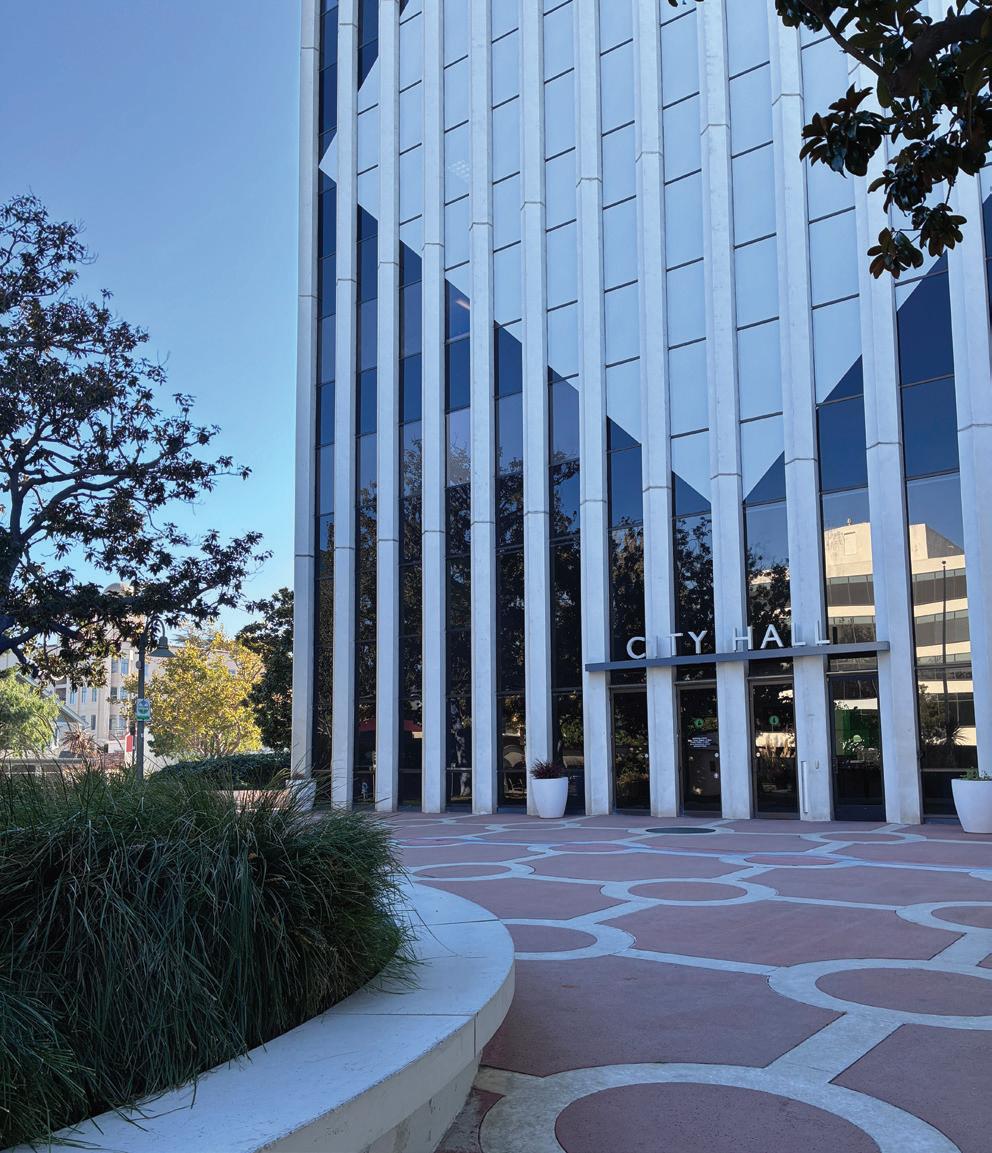
On Sept. 29, the Palo Alto
and
approach that the committee has considered is sending text messages, instead of emails or Schoology messages. According to Lu, however, there are many regulatory restrictions by the district that make the odds of it being implemented anytime soon unlikely.
“When we try to send emails, they just get ignored,” he said. “When we have sent split messages, they get ignored. Most teachers don’t show the weekly news announcements, and having a PA will be way too much disturbance so we have been trying to look for a solution that can effectively talk to people.”
Lu mentioned that while all dangers are regarded as relevant to the committee and district, gun violence is not regarded as the highest concern. It is not treated with greater priority then other emergencies such as earthquakes, fires and bike theft. Lu views this as a positive, due to the likelihood of a gun-related emergency
still being lower than others.
“(We) give them equal attention,” he said. “The reason I base my opinion (that this is positive) is we are far more likely to face other kinds of emergencies. I don’t think that putting disproportionate attention into gun violence will be necessary.”
Lu raised this personal concern about the current evacuation procedure, urging the campus to make changes due to its potential dangers.
“Currently, (within) the fire evacuation procedures, everyone will go to the field and decrease safety bottleneck,” he said. “(In) event(s) where people set to (out) target students, they will usually put a fire alarm. Having most bottlenecks around the field entrance is not a safe procedure. The committee has been discussing adding alternate evacuation points on campus.”
According to Jacobs, the localization of school gun violence is acknowledged on a district level. Specifically, it prompts certain discussions that sometimes lead to
procedural changes, but consistently reinforces the importance and procedures already set in place.
Similarly, Assistant Principal Erik Olah mentions that when local events occur, responses to such events are never identical. Therefore, procedures will always vary depending on the incident but are still to be assessed by the admin team, along with district personnel and law enforcement to help carry out a plan that puts student and staff safety first.
“These situations tend to be unique so they require us to be adaptable to different responses,” Olah wrote in an email. “There is no one playbook or policy that covers every situation. Each situation is different, is taken seriously and requires a different response. (Still), in each situation, student and staff safety is our top priority.”
780 Arastradero Rd. Palo Alto, CA 94306 (650) 354-8238 www.gunnoracle.com
Editorial Board
Editor-in-Chief
Sylvie Nguyen
Ma naging
Editors
Yu-Ming Liu
Ya-An Xue
News
Vin Bhat
Sarah Grupenhoff
Vanisha Vig
Forum
Kaylee Cheng
Claire Jittipun
Melody Song
Features
Gwen Domine
Lena Duggan
Eanam Maor
In-Depth
Roy Lao
Melody Na
Sports
Yael Gottesman
Olivia Lee
Lifestyle
Anne Dong
Ezra Rosenberg
Vaani Saxena
Social Media
Vaani Saxena
Photo Editor
Mars Ezakadan
Graphics
Azuki Radhakrishnan Staff
Business/Circulation
Eanam Maor
Graphics Artists
Vin Bhat
Hannah Jung
Kai Knutson
Sophie Kou
Michael Lu
Alexandra Liu
Sahana Mahadevan
Dani Massarweh
Nina Pankov
Ezra Rosenberg
Photographers
Inaaya Ahmed
Vin Bhat
Evelyn Chow Lucas Ji
Maryam Maskatia
Nicole Mok
Victor Peng
Chloe Wu
Albert Zhang
Reporters
Annabel Brown
Mayher Dulani
Athena Gao
Yuji Song
Adviser
Kristy Blackburn

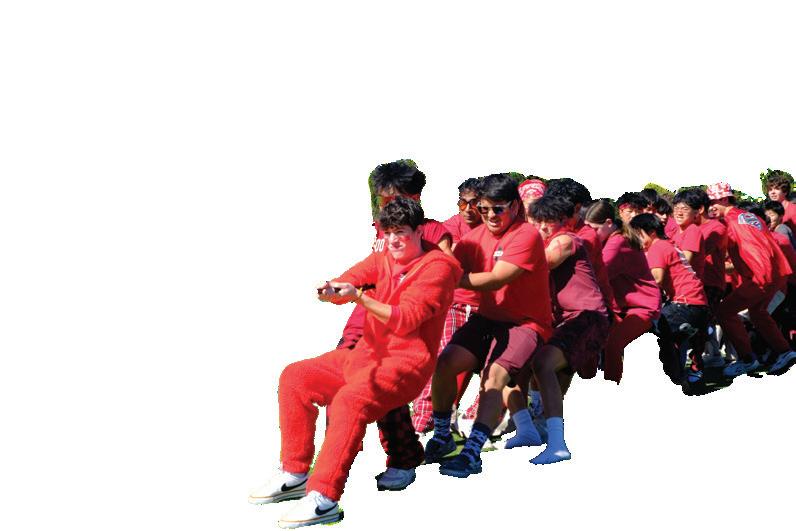
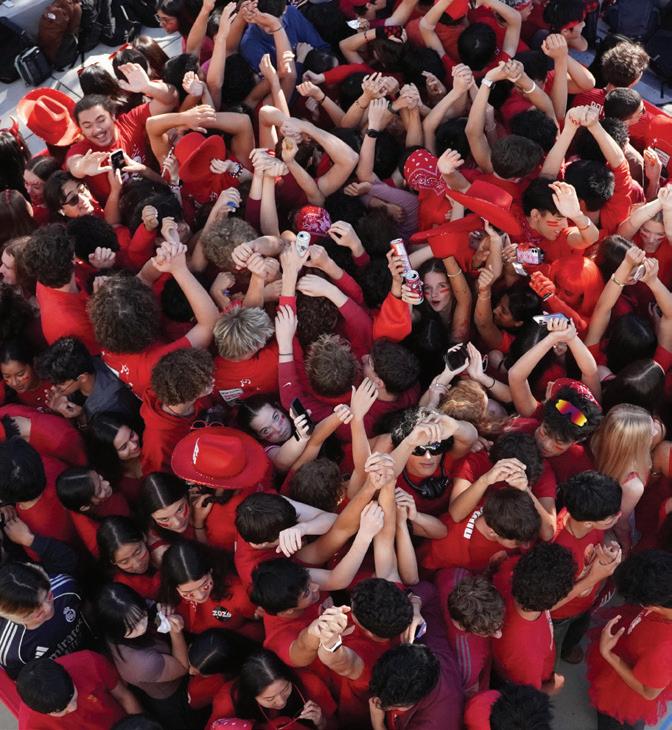
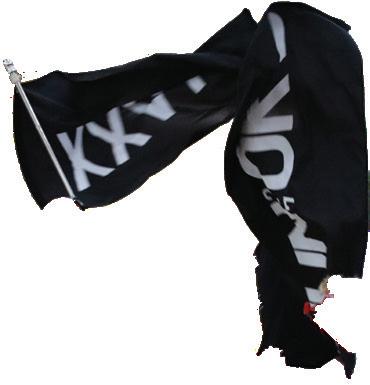
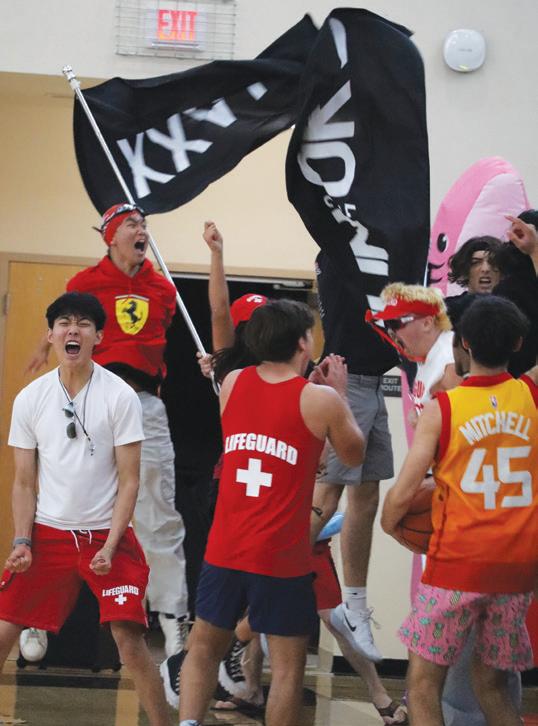
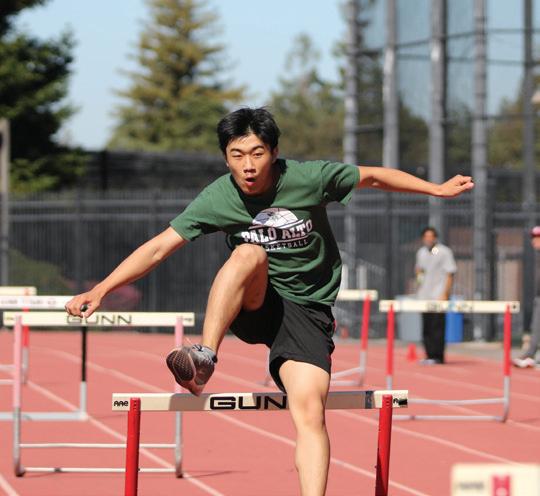
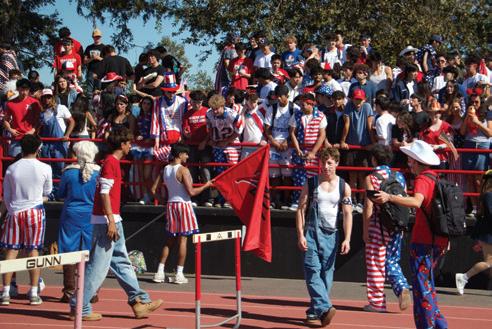
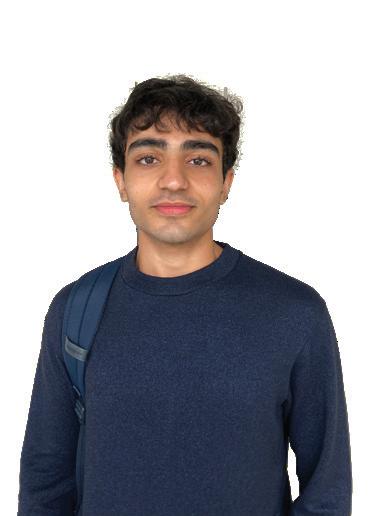

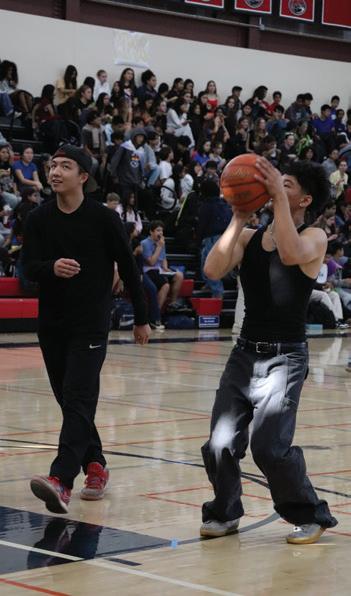

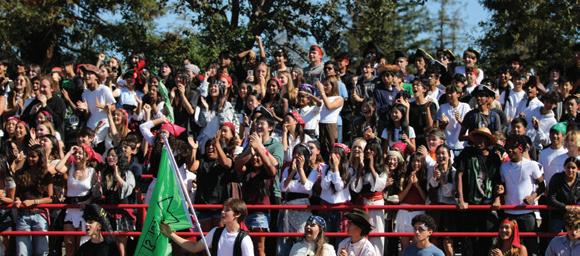
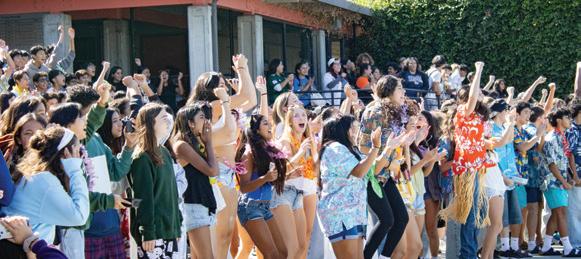

The Oracle strongly encourages and publishes signed Letters to the Editor and Comments. Comments are generally shorter responses, while Letters are longer pieces of writing.
Please include your name, grade and contact information should you choose to write one.

“I thought the September issue (of The Oracle) was informative. I especially liked the graphics in the issue.”
“I liked how in each section there was a various spread of things to talk about. I was very amused and the stories were so different from each other.”
“The advanced diploma was pretty interesting to me. I thought it was really interesting.”

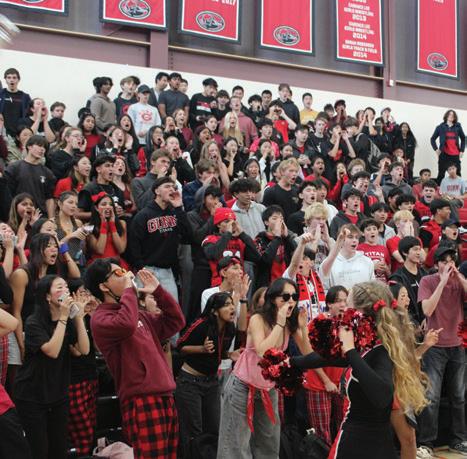
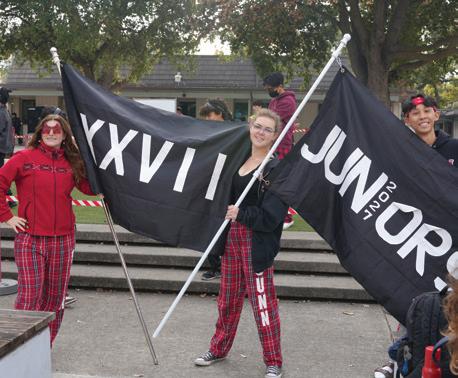

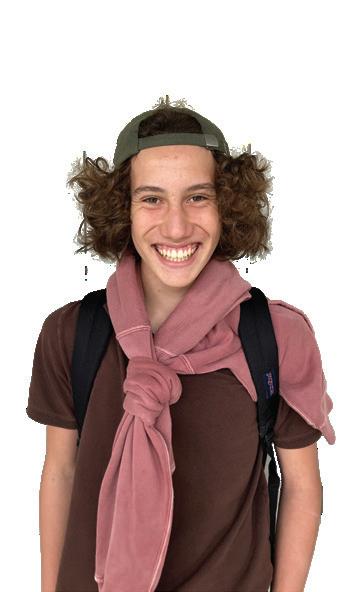

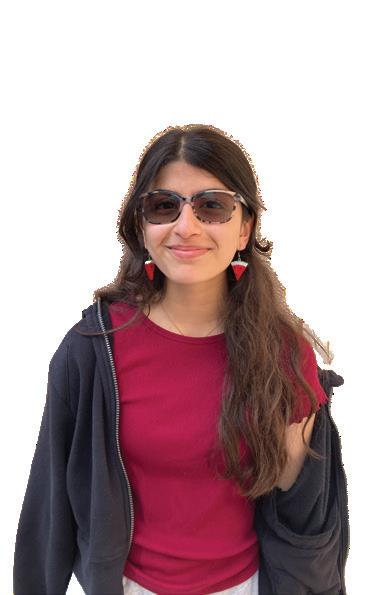

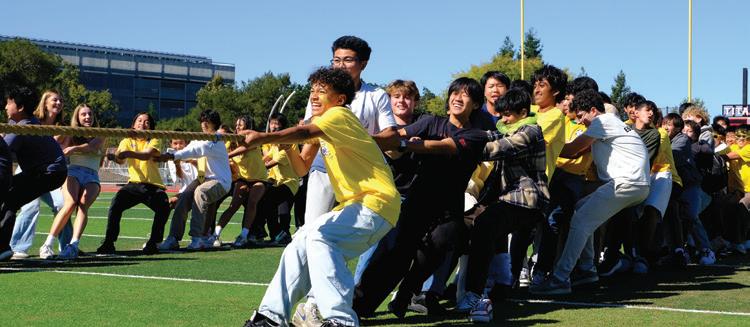
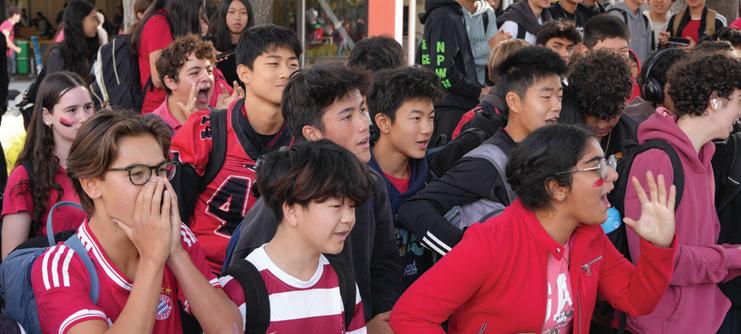
Letters and Comments may be edited to meet space requirements, and the writer is solely responsible for the accuracy of the content.
Letters to the Editor, Comments and ideas for coverage may be sent to oraclegunn@gmail.com. These letters do not need to be from current students.


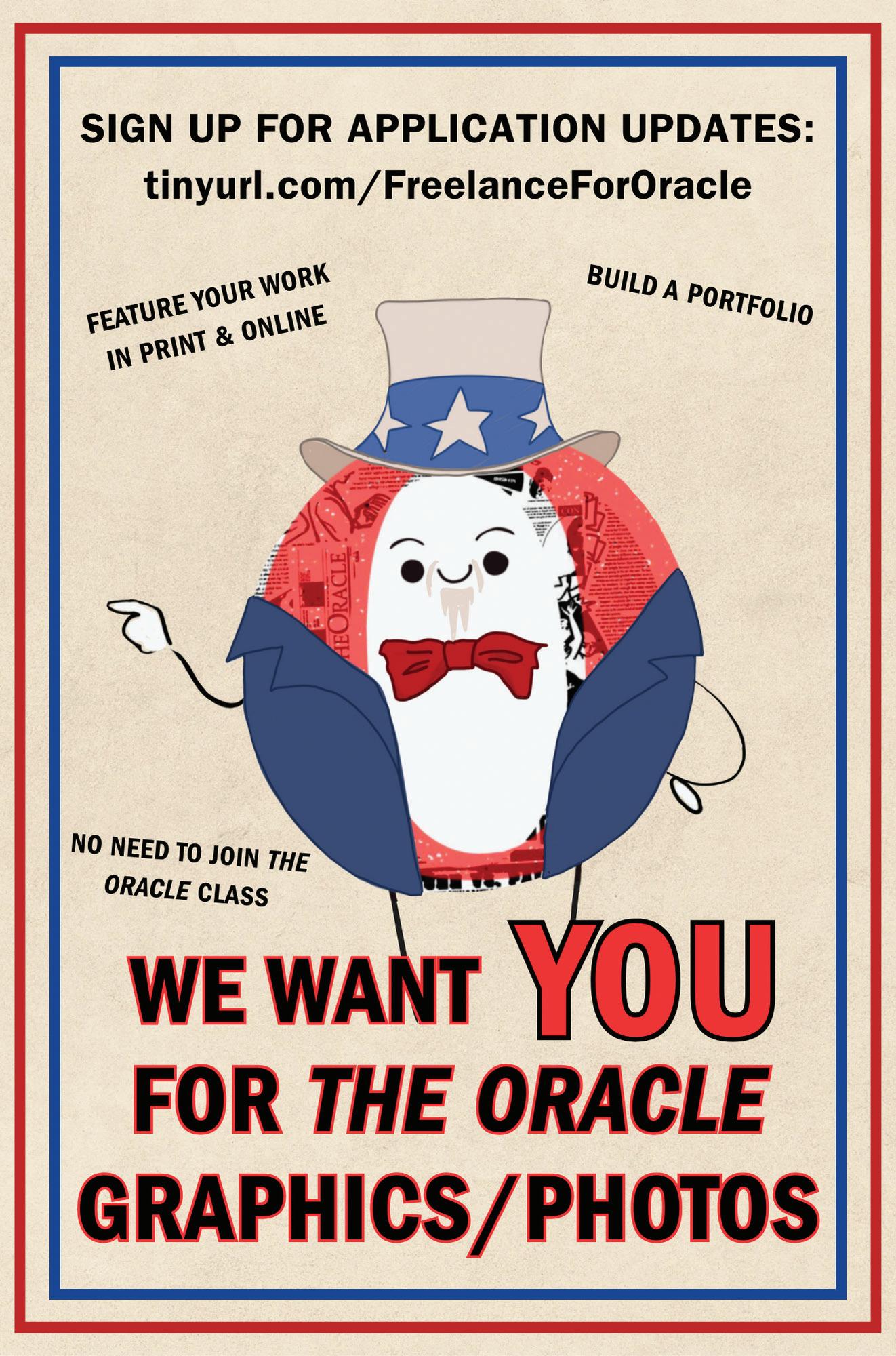
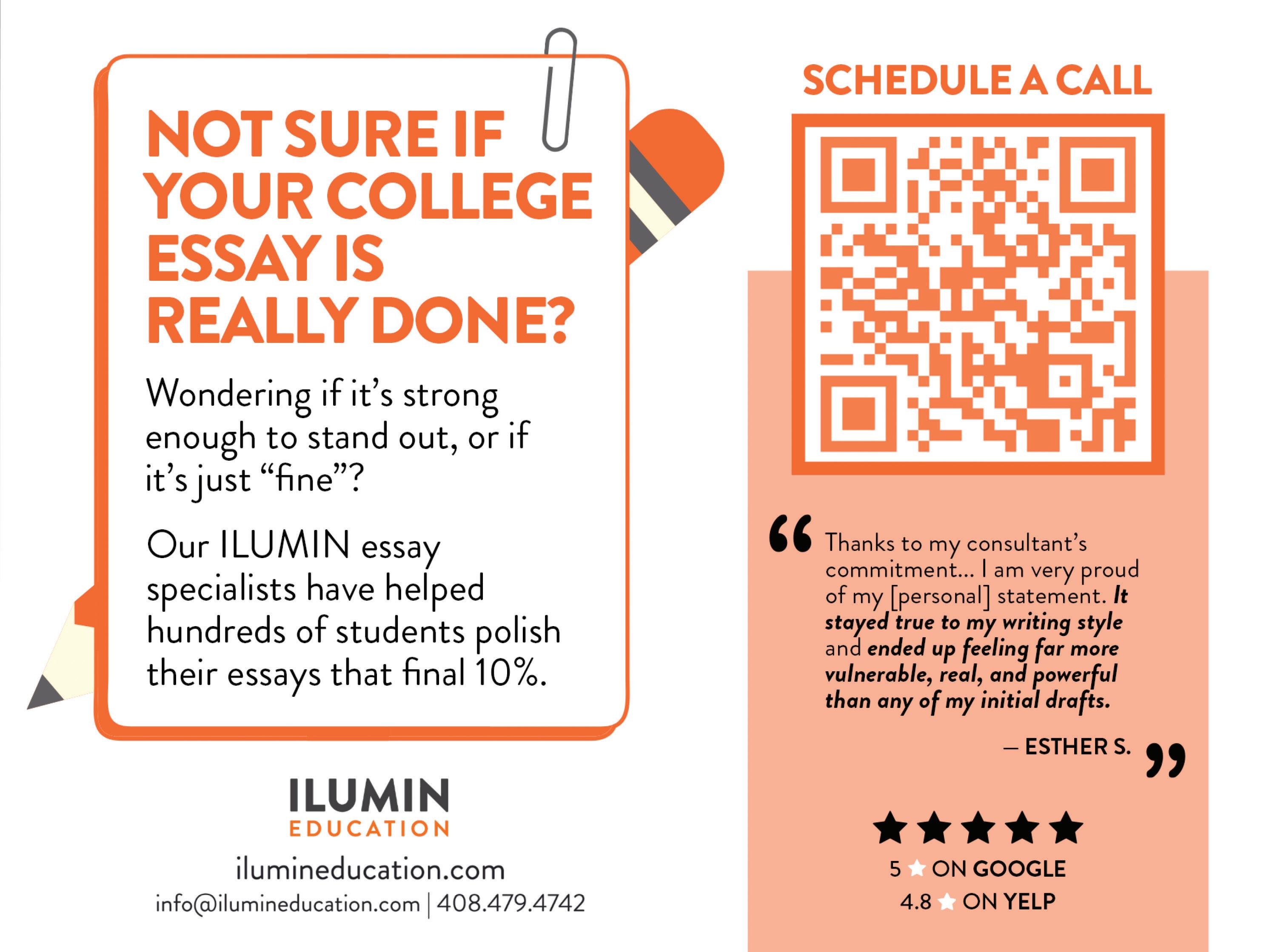
Picture a rope bridge over an abyss. One wrong move — a misstep, a glare, a threat — and that bridge collapses. In recent times, the rope bridge of free speech has wobbled in many directions. Two worth highlighting are the national stage of late-night television, and a local student newspaper press room.
As journalists — and as individuals protected under the First Amendment — we deserve to tell the har d truth. True free speech is non-negotiable.
On the national level, “Jimmy Kimmel Live!” was yanked off the air for five days after Kimmel’s remarks on the assassination of Charlie Kirk. He said that “the MAGA gang” was working “to score political points” by reshaping the narrative of Kirk’s death. The Federal Communications Commission, led by Brendan Carr, publicly criticized Kimmel’s comments and warned broadcasters of consequences, threatening litigation based on a rarely-used news distortion argument. Nexstar and Sinclair ABC affiliate channels dropped the show, apparently fearful that airing Kimmel would invite regulatory blowback. In effect, media institutions folded under pressure. Kimmel’s show was later reinstated after public backlash, with protests taking place outside Disney’s offices and studios. This was primarily a reversal born of public pressure, not institutional courage.
Now shift the scene closer to home: at Mountain View High School in 2024, students from “The Oracle” — unrelated to Gunn’s The Oracle — sought to report on sexual harassment and peer misconduct. Principal Dr. Kip Glazer intervened. She admonished them to cast the school in a better light, removed their journalism advisor, pressured content changes and shuttered the prerequisite Intro to Journalism course, effectively blocking access to joining the newspaper. The students responded to this alleged censorship by sueing — not merely for their own sake, but for the principle that school officials, especially
under California student press law protections like Education Code § 48907, cannot censor uncomfortable

ridicule, then speech becomes hampered. When those who control the mic — networks, principals, regulators — act as editors of media as a whole, the public loses more than words: We lose possibility for open discourse, we lose trust and we lose the messy friction by which
If institutions are unwilling to bear the discomfort of criticism and ridicule, then speech becomes hampered.
To preserve a bridge that doesn’t collapse at first gust, standards must be ironclad. Schools and media alike need rules that protect voices, not silence them. In California, Education Code § 48907 protects student speech — such protections must be defended vigorously. Other states must bolster their student press protections beyond the existing federal baseline. Second, regulators must step back. The FCC’s role is critical, but when its leader signals retribution, we cross into censorship by intimidation. Third, institutional humility is essential. Schools and networks should accept that truth can and will sting. They are not museums of image, but stages of immense consequence. The truth — no matter how much it hurts — must be shared. Finally, we, the public, must be noisy. Pressure works. Reinstating Kimmel wasn’t a virtue of quiet compromise but a sign of
As George Orwell once said, “If liberty means anything at all, it means the right to tell people what they do not want to hear.” As journalists — and as individuals protected under the First Amendment — we deserve to tell the hard truth. True free speech is non-negotiable.
Today, we gaze at the rope bridge. Sometimes it shudders, sometimes it sways — and sometimes, it seems poised to snap. But we cross anyway. Because conditional speech is speech no one can trust. And a bridge that doesn’t
— Unsigned editorials represent the majority opinion of the staff (assenting: 25; dissenting: 0; abstaining: 0).

Vaani Saxena LIFESTYLE EDITOR
Every morning on the way to school, my parents always ask me to play one station — 88.5, KQED News. I’d hate to see this morning ritual taken away and yet, under new federal budget cuts, this is a looming threat in today’s administration for millions of people in America. In July of 2025, Congress passed a bill to cut funding for public media corporations. This bill has drastically affected public media companies, low-income populations and changed our lives for the worse.
The bill cut $ 1.1 billion in funding from NPR, PBS and over 1,500 radio stations around the country, according to digital news nonprofit The Fulcrum. According to PBS Western Reserve, PBS itself reaches 89% of nonInternet homes, 82% of lower-income homes, and 78% of rural homes. The implementation of the bill has cut off access to media for many of these groups. That’s over 3.3 million adults and over 1.81 million households. Along with these employees, users of public broadcasting have been heavily impacted. In 2025, 83% of Americans have not paid for news, according to Pew Research. According to an article from The Conversation, households with
an average income of $80,000 can pay for or subscribe to 10 or more news outlets, while households with an average income less than $54,000 are less likely to have such robust access to news outlets. Public media is a heavily used source all across the U.S. This legislation has resulted in less information on world and nationwide issues, something that is crucial for the safety of America.
Pew Research states that 12% of Americans think that journalism is extremely important, 32% think that it’s very important and 41% think that it’s somewhat important. Most people assume that “Journalism is dying” or “No one listens to the news anymore,” so defunding these
29.8% of students listen to federally funded broadcasts like pbs or npr sometimes or every day
Source: Self-selected survey sent out to Gunn students by The Oracle from Oct. 16 to Oct. 27 with 105 responses.
companies won’t have a quantifiable impact. Well, here are the numbers: Along with normal news programs, PBS offers many free educational programs for children including beloved shows like “Curious George,” “Sesame Street” and “Wild Kratts.” Not only is this bill affecting listeners of the radio station, it’s also affecting childhood education in America’s future. Doesn’t sound too good to me.
You may call me biased against this bill, because I am a journalist. Sure, let’s say you have no interest in the impact the bill will have on journalism. The Corporation for Public Broadcasting stated that all across the U.S., 19,000 people work in public media. The number of lives and families are being affected by this bill is tremendous. This bill doesn’t just affect the journalists and the companies, it’s displacing these families.
Rather than continuing to spit facts at you, I’ll give you ways to take action: donate to your local media outlets, like KQED and NBC Bay Area, write to our congress members and government officials and, I cannot emphasize this enough, petition. Sign petitions, start them or fund them. What’s happening today in this country is stripping our resources away from us. No one deserves this. We have to fight back and support journalism. Think about the kids sitting in the back of their parents’ old van listening to the NPR “perspective” stories and filling out the crossword in their local newspapers. Would you really want to take that away from them?
‘Put your money where your mouth is’: consumers should consider business values before purchasing

Sarah Grupenhoff News Editor
Voting does not need to be confined to a ballot box — it happens in the marketplace, too. Every purchase enables consumers to “vote with their dollar,” choosing whether or not to let their values guide their purchases. These choices have the power to reinforce and even collectively shift the practices and ethics of various companies, ultimately allowing consumers to shape the kind of world they want to live in. Outside of the store, personal values typically dictate how people live their lives. Yet when they enter a mall, open an online shopping website or access other hotbeds of consumerism, many of these deeply held moral values are quickly replaced by the possibility of beneficial factors like cheaper prices or easier accessibility. At the end of the day, claiming to support personal principles means little if, in practice, consumers’ purchases continue to sustain the very practices those values oppose. But imagine how the world could transform for the better if people did the opposite. Positive changes will ensue if consumers hold themselves accountable to their own moral standards when deciding what to buy. Upon first glance, such ambitions may sound like figments of an unattainable utopia — however, it is quite possible with just a quick switch of perspective. It is a difficult feat to find somebody who openly opposes basic human rights, because, as it turns out, most people enjoy having freedom. So, carry this conviction into the marketplace and take notice of rampant, unjust practices that are meant to obtain maximum profit at the expense of other humans’ wellbeing. For instance, the non-profit Center for Alliance of Labor and Human Rights noted a report from May of ongoing worker abuse at the fast fashion brand H&M’s supplier factories, corroborated by interviews
denoting the same abuses. These kinds of human rights violations continue in the factories of countless other brands, such as SHEIN, which uncovered two instances of child labor in 2023, according to the company’s own sustainability report.
These inhumane working conditions, which cut costs to increase company profits, are the unfortunate source of the lower market prices that catch a consumer’s eager eye. The capacity to reassess this trade-off of ethical practices against monetary gain is a privilege that anyone financially stable enough has and should make use of.
83.3% OF SURVEYED STUDENTS wOUlD makE SacRiFicES wiTHiN THEiR DailY liFE FOR a caUSE THEY bEliEVE iN
Source: Self-selected survey sent out to Gunn students by The Oracle from Oct. 16 to Oct. 27 with 102 responses.
Of course, not everyone makes regular purchases from certain unethical brands. There are undoubtedly many who have never even bought a single item from at least one of them. However, that does not absolve them of the responsibility to research the ethics of the companies they do purchase from. While it is the duty of corporations to prioritize preserving ethics in their practices, it is also the duty of the consumer to educate themselves about where they shop and to make decisions applying that information accordingly, based on a personal moral compass. Buying from a brand provides it with funds not only to support company ventures, but also to financially back organizations that promote certain principles through donations. Therefore, if one does not agree with the principles fiscally supported by a corporation, they should boycott brands to pause personal funding.
Brands are defined by more than just their products — the political affiliations they carry shape the values they project. The current United States administration has severely dismantled long-standing policies for diversity, equity and inclusion, threatening the livelihoods of numerous marginalized groups. In either compliance with these executive orders or anticipation of future ones,
important, 28% of respondents could not name a single socially conscious company. This only further stresses the importance of researching the brands one purchases from, and more specifically, where the money spent goes.
This social sensibility is especially crucial now, in times where society has become desensitized to violations of basic human rights. Namely, the attacks on undocumented people by ICE agents have increasingly been rooted in discrimination rather than genuine, reasonable suspicion, leading to an epidemic of immigrant abuse. In August, an investigation led by U.S. Senator Jon Ossoff exposed immigration detention facilities in 25 states to have had 41 cases of physical and sexual abuse, 14 of which involved pregnant detainees and 18 of which involved children. Additionally, after the Supreme Court overturned an order on Sept. 8 that had blocked ICE from basing detainment on race and language in the Los Angeles area, racial profiling has only become more uncontrolled.
Protesters across the country have condemned these injustices, establishing their stance opposite to where the aforementioned brands have placed themselves. In their activism, they have called for boycotts of companies not acting in socially responsible ways, encouraging everyone in favor of social justice to stop funding organizations against it. It is up to each consumer to make this decision for themselves and commit to a cause — whether that be for social justice or a different ethical value — and express their principles by either boycotting a brand or showing it continued support.
68.2% OF SURVEYED STUDENTS HaVE NOT HEaRD OF THE TERm ‘VOTE wiTH YOUR DOllaR’
Source: Self-selected survey sent out to Gunn students by The Oracle from Oct. 16 to Oct. 27 with 107 responses.
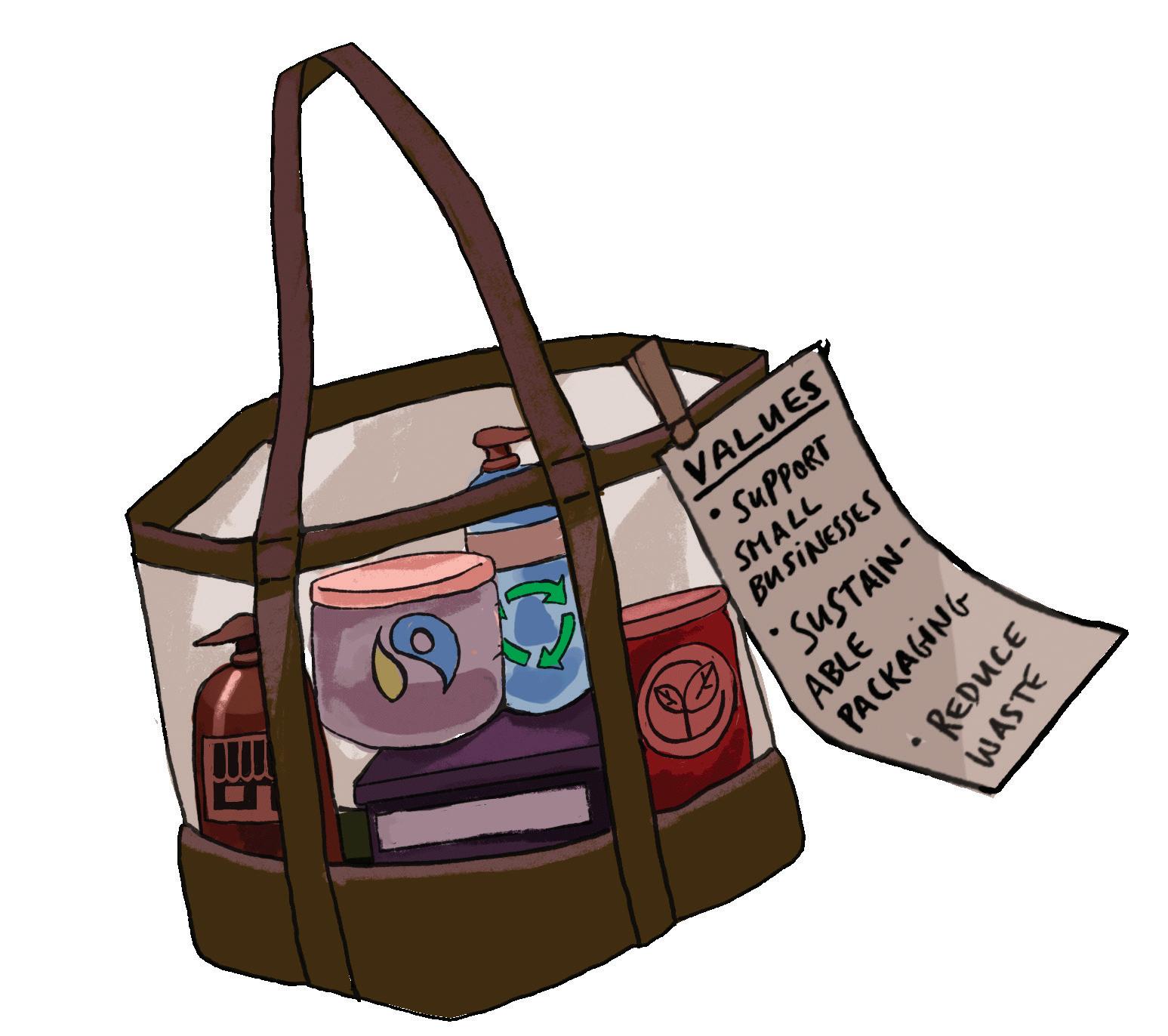
That is not to say, however, that the best approach to “voting with your dollar” is to just pause all purchases from a brand upon learning by word of mouth that its ethics do not align with closely held moral values. Always do personal research to crosscheck information, as being accurately informed is just as much part of a consumer’s responsibility as it is to cut off “bad brands.” After all, every company has its flaws — consumers must weigh out and compare the pros and cons of policies from multiple brands, deciding who to give their money to based on a “lesser of two evils” mindset rather than an extremist blackand-white mentality.
Given the power, influence and scale of these extensive companies, many feel intimidated, thinking that individual actions are pointless. But most major movements have humble beginnings; they start with small acts of protest that eventually build up to big changes. Look at the 20 years of anti-sweatshop campaigning against Nike as an example. This worker’s rights movement has gradually built up to a major activist movement since the 1990s, with the protests of this campaign forcing Nike to go from denying responsibility for any malpractice in its factories to operating with significantly more transparency. Although it took two decades, these protests ultimately paid off — creating major positive change for Nike factory workers.
Just 25% of people need to take action for social change to occur, according to a 2018 paper by sociologist and University of Pennsylvania professor Damon Centola — so yes, individual actions do matter. But even without the numbers, “voting with your dollar” is not about guaranteed outcomes, but rather integrity. Giving up before even trying to create change is arguably more of a failure than being unsuccessful in an attempt. Choosing to act on principle, even when change feels utterly impossible, transforms impossibility into reality, laying the groundwork for a fuller, more ethical future.




At age six, scribbling princess stories on a spiral notebook ignited a realization in English teacher Miranda Long: Words hold the power to inspire, heal and express voices. What began as a childhood interest in writing born out of pure imagination soon sprouted into the lifelong, dedicated passion for creative writing that now defines her both as a professional writer and teacher at Gunn.
For Long, writing is more than just putting words on a page, but a “tangible manifestation of thoughts.” She finds great satisfaction in precisely crafting her ideas into sentences that capture her message.
“When you’re able to put something down that came from your brain, to me there’s no better feeling,” she said. “It conveys exactly


different topics, and the flexibility of each publication cycle allows her to be creative with what she wants to write about. One of Frank’s favorite articles she has contributed to The Chariot was a deep dive into the fentanyl crisis in California.
“I co-wrote (the article) with one of my friends, who’s also in ‘The Chariot’,” she said. “Our search history after that was very interesting. It was also a pretty huge insight and we had fun panicking over the deadlines.”
By taking on a leadership role last semester, Frank has learned how to effectively communicate with others through responsibilities like taking charge of the publication’s email string and leading meetings. The club is always working to expand its staff of writers and graphic artists, advertising mainly through word-of-mouth at events such as the annual club fair or freshmen orientation.


but many people think in fragments.”
After reading it, Kitada advised her to submit it to competitions. So, Wu entered the Palo Alto Students Foundation Poetry Competition and won first place with her first draft.
“I was like, ‘Wow, huh, it’s kind of cool, yeah, poetry could be my thing,’” she said. Wu then went back and revised, editing out some parts that she thought were too personal and changing some of the wording. Wu looked to craft a poem that encompassed the truest form of self-expression before submitting to the Scholastic Art and Writing, winning a Gold Key, the highest award available regionally.
“In poetry, how you express things is very specific,” she said. “You can change a word, and the implications are all changed. I’ve written more poetry because I realized it’s very easy — once I have a spark — to dump a bunch of stuff out, and it’s a really good way of expressing the stuff that has been going on in my head.”
With “Magnificence of the First,” her spark arose from her internal dialogue, while other poems of hers have come from conversations as simple as those that she shares with her

“These sparks usually become pieces of poetry because they change something about how I view the world, or they delve into a bit of perspective that I originally had that I wasn’t very clear about before or I have a new way of seeing it,” she said.
As an exercise, Wu engages in “five-minute poems,” where she looks around, finds one word and gives herself five minutes to write a
“Generally these five-minute poems are less deep in terms of messaging than the ones I actually take a chunk of time to write as a whole, but they are a good way to practice the
As she progresses in her writing career, Wu hopes to shift to a wider range of topics outside of herself. For those interested in writing, Wu advises to be very reflective and add a personal touch to each poem.
“Start by being more self-reflective and observant of everything else,” she said. “When senses (are) sharper it tends to lead to more of those sparks and once you have those sparks, it’s very easy to write.”
—Written by Yael Gottesman


Gwen Domine and Claire Jittipun Features Editor and Forum Editor
A growing pattern of limited communication and perceived withholding of information has raised concerns among PAUSD families. From the quiet reinstatement of a teacher previously accused of misconduct to confusion surrounding the rollout of the district’s new Ethnic Studies curriculum, many community members say PAUSD’s lack of transparency has fractured

abide by the community’s need for openness. On the other hand, there is a double standard that can be seen set up by parents on specific issues, which dispute the means of transparency previously implemented.
In two controversies, specifically regarding the reinstating of former Greene and now current Fletcher P.E. teacher Peter Colombo, along with the debate over PAUSD’s Ethnic Studies curriculum, parents have accused the district of failing to inform the community and not being openly transparent until after major decisions were made. However, in both cases, the district

62.2% of students think that their voice as a student is not heard on the district level
Source: Self-selected survey sent to Gunn students by The Oracle from Oct. 16 to Oct. 27 with 98 responses.
board meeting on August 20, but according to Gunn junior Iana Kibardina, the meeting was unproductive.
“We (each) had a minute to say something,” Kibardina said. “(The board members) just kind of moved on. They didn’t say, ‘Oh, we’re gonna work on this.’”
Later in the school year, Howell proposed an in-person meeting with concerned parents. During the meeting, Barrett reported that Howell said Fletcher will find ways to address parent worries.
Barrett and other parents are disappointed in the frequent lack of communication from the district regarding Colombo.
“It’s really disrespectful to the parents for (PAUSD) to not do anything, to not listen to our concerns, to not engage with us in any way,” he said. “There’s now this aura of distrust between the parents and the leadership. We’re not quite sure what else we can do.”
When contacted by team declined to comment.
The Colombo reassignment fits a pattern in which PAUSD information reaches the public late or after legal pressure.
In 2020, the district settled a California Public Records Act suit brought by Chief Executive Officer at KnowLearning Matthew McClain regarding failure to respond to record requests for student assessment data dating back to 2010, including contracts and demographic breakdowns.
By mid-May, the board voted 5-0 to settle the matter for $9,964 and agreed to produce the requested records. However, the situation highlighted the inertia in district action until legal means were enforced.
More recently, in 2025, the district faced yet another transparency controversy, this time surrounding the rollout of its Ethnic Studies curriculum. This began on Jan. 21, when a scheduled PAUSD school board meeting erupted in debate regarding this course.
During the Open Forum section of the meeting, parent Lenor Lavaba expressed the main concern of many parents: that the district lacked communication and transparency behind the course itself and what would be taught. After filing a request to see what was being taught in the pilot Ethnic Studies course three months prior to the meeting, Lavaba stated that she had only received a single document with disabled links.
42.7% of students think that Pausd aPProaches issues without enough transParency
Source: Self-selected survey sent to Gunn students by The Oracle from Oct. 16 to Oct. 27 with 96 responses.
“This isn’t just my right as a parent, it’s required by both district and state law,” Lavaba said at the meeting. “This lack of transparency should concern everyone. Why can’t we see what’s being taught? And most importantly, why is the board rushing to vote on a graduation requirement for a course that (they) won’t even show us?”
Many teachers refuted these arguments during the meeting, stating during the meeting that years had been spent crafting the course. Palo Alto Social Studies Instructional Lead Mary Sano at Palo Alto High School shared the context in which the curriculum was developed.
“The curriculum development was based on the two years prior of a lot of discussion, brainstorming and planning,” Sano said. “Then, our four pilot teachers took all of this material and crafted it into the class that was run. This entire process has been a significant amount of dedicated work by this whole team. It is some of the most meaningful work I’ve done.”
It’s really disrespectful to the parents for (PAUSD) to not do anything, to not listen to our concerns, to not engage with us in any way. There’s now this aura of distrust between the parents and the leadership. We’re not quite sure what else we can do.

Fletcher parent Clark Barrett
Additionally, Jeff Patrick, then-Gunn Social Studies Instructional Lead, offered his perspective during the meeting as an Ethnic Studies course developer.
“When (the Ethnic Studies panel) is hearing that there are concerns about the course and the way it’s being presented to students, we can’t help but take that personally,” Patrick said. “And that’s the job that we thought we had the trust of the board to do.”
Patrick also stated that other courses such as art and history classes were approved by the board on January 21 without having to submit lesson plans, which sets a double standard targeted at Ethnic Studies.
“If we start opening ourselves up to every request that we get from a community member to provide a lesson plan for the day, that starts a chilling effect on my ability to respond to the needs of my classes and students,” he said at the meeting.
Social Studies teacher Ariane Tuomy, who piloted the course, addressed the issue regarding parent concerns of lack of transparency about the course curriculum.
“From my perspective as a teacher, there’s a form that we always use for

will be discussed,” White wrote.
PAUSD’s subsequent actions from both the Ethnic Studies and Colombo controversies abided by the corresponding rules regarding transparency. However, the overwhelming varied opinions from the district community on the rules of clarity sway this meaning of transparency — when it comes to a specific issue of their choosing, transparency seems to be interpreted in different ways.
While district leaders assert that confidentiality, legal proceedings and procedural requirements limit what can be shared, many families feel that these same boundaries are used to justify silence. To parents, transparency means open communication and proactive disclosure; to the district, it means compliance with legal thresholds.
This difference in interpretation has become the root of the ongoing frustration. In both the Colombo reinstatement and the Ethnic Studies rollout, PAUSD followed formal guidelines for public notice, but failed to meet the community’s expectations for more honesty and dialogue. The result is a growing divide: one between the district’s definition of transparency and the public’s desire for genuine openness.



As social media continues to rise in popularity, so does the stigma that comes with it. “Distracting” is often used to label platforms such as Instagram, YouTube and Tiktok. While social media has its downfalls, staff members have found ways to unify and educate in a youth-friendly environment. Through active accounts, biology teacher Joshua Little, secretary Janet Owen and Principal Dr. Wendy Stratton utilize these accessible and high-impact multimedia tools to build deeper connections with the heart of the community while staying relevant to a digital generation.
When Owen started posting on the admin team Instagram account (@gunnadminteam) two years ago, she intended it to be a page for broadcasting school events, activities and important reminders. What began as a purely informative tool quickly migrated into a story-telling space that provided insight into the personalities of the faculty.
“Dr. Stratton really wanted a way for the admin team to connect in other ways with students, which is why a lot of our posts are getting to know the different assistant principals and little fun facts about people — just trying to make the admin team more personable and less scary,” Owen said.
This summer, Owen came up with the idea to start a series of posts featuring photos of teachers travelling during the break. These snapshots were strikingly diverse, ranging from English Language Learning teacher Alexis Lee at the Leshan Giant Buddha in Chengdu, China all the way to math teacher Rachel Congress standing next to a koala in Australia.
Beyond the summer adventures, engagement spikes even higher when the account posts unexpected talents and fun facts from teachers.
“I try to do fun little things each month,” Owen said. “Two springs ago, around graduation time, we had a bunch of pictures of teachers and staff members when they were in high school that we put up, and the students really loved seeing the flashbacks and the little things (to get) to know people.”
Through consistent posts of meaningful, thoughtful quotes, Owen has already brought the Instagram account to a sweeping 1,195 followers with over 500 posts. She continues to pursue her goal of making the staff appear more approachable and a lot more under the surface.
Contrasting from Owen’s casual, personal touch, Stratton uses social media to share the creativity and community spirit that makes Gunn its unique self. On her LinkedIn account, her posts feature everything from deep, interesting lessons to lunchtime activities and unique partnerships.
“I try to promote Gunn because the big idea is wanting people to understand how much is happening and nobody knows,” Stratton said.
Stratton shares the side of Gunn that doesn’t always make it into parent emails or Schoology announcements: fun classroom activities, events and school spirit. Hoping to expand the featured internal activities going on campus, she is planning on developing an initiative to start a five-minute podcast series in partnership with broadcast teacher Edward Corpuz, featuring simple questions with the staff. Her project aims to elevate connection within the community, particularly for new teachers who
may not know much about other staff members.
“One of the things I keep hearing from the staff is that more and more each year there are just new teachers and they just don’t know each other,” Stratton said. “They don’t realize that they have a lot in common and they don’t have time to, so using social media can inspire more department connections and kids can get to know their teachers on a different level.”
As an eighth year teacher biology and Living skills teacher, Little has taken an experimental approach sparking curiosity beyond the labs with social media. Through his Instagram account (@mrlittlebiology), Little’s posts span from fun facts about science to reposts of real-life experiments conducted by well-known scientists, allowing students to draw applications to biology.
“I just started seeing cool things that are posted on Instagram from other scientists and universities that are just fun things that can connect to our class, not necessarily something that we are studying in depth but a connection that students can make that they don’t usually see,” he said.
Little has seen a ripple effect of scientific curiosity outside of the classroom. As he reposts the accounts of notable scientists, students are compelled to interact with these accounts, liking or following and effectively adding scientific content to their algorithm.
“There is a lot for enrichment so students can see extensions of what we talk about in class or real-world applications,” Little explained. “The other cool thing is when students find things that they find related to class and share it with me. It’s really cool to see them turn it around and make a connection with biology.”
Students are encouraged to explore and question outside of lectures. Little sees the positive results stemming from his students’ growing curiosity and exposure to different material past his classroom.
“I think it’s a cool extension that you can add to your classroom — our classroom isn’t just the four walls that we teach in, but outside those four walls,” Little said.

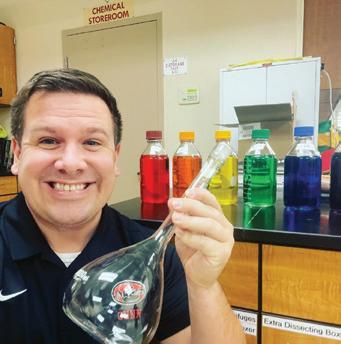
There is a lot for enrichment so students can see extensions of what we talk about in class or real-world applications



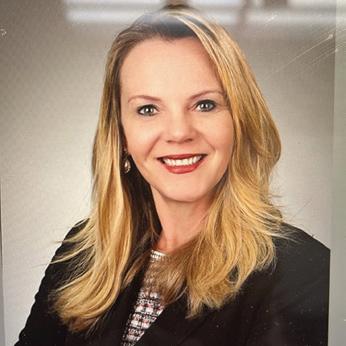
I try to promote Gunn because the big idea
wanting people to understand how much is happening and nobody knows.
Though their approaches differ, Little, Owen and Stratton all share a common philosophy of using social media to bring the Gunn community closer together. Their efforts prove that platforms seen as distractions can, in the right way, become tools for innovation, unity and connection.
“With social media there are obviously pros and cons, and I think there are some really great aspects of social media,” Owen said. “Students and youth, for the most part, are going to be on social media whether we like it or not, so I think it’s a great place for staff members, teachers and admin to meet students where they’re at and find new ways to connect with them.”
—Written by Yuji Song


Dr. Stratton really wanted a way for the admin team to connect in other ways with students, which is why a lot of our posts are getting to know the different assistant principals.


A century ago, female athletes were told to cover their ankles. Now, they’re told to show their legs. Across time, the rules have changed, but the message remains the same: Women’s bodies are still being managed, measured and judged within the realm

In 2021, the Norway women’s beach handball team sparked international attention for wearing thigh-length shorts instead of the required bikini bottoms, a protest against rules that many saw as outdated and sexist. The team was fined 150 euros per player, but their determination inspired similar conversations across sports and within the media. That same year, the Germany women’s gymnastics team chose full-length unitards at the Tokyo Olympics to challenge the expectation that female athletes should compete in revealing leotards.
More recently, Nike faced criticism for its 2024 women’s track and field uniforms, which exposed far more skin than the men’s versions. These events highlight how design standards in sports clothing continue to treat women differently, sexualizing their bodies.
Ironically, this current debate marks the complete opposite problem early female Olympians faced. For much of the 20th century, women were forced to compete in restrictive, modest clothing meant to prevent them from being “distracting.” Over time, even as uniforms grew more revealing in the name of modernization and current fashion trends, control over a woman’s athletic image persisted. As uniform expectations have switched from one extreme to the other, the shared similarity lies in prioritization of aesthetics and social expectations above the comfort of female athletes, minimizing their bodily autonomy. This discussion isn’t only confined to the international level. In fact, PAUSD students have reported similar concerns within both in-school and extracurricular sports teams.
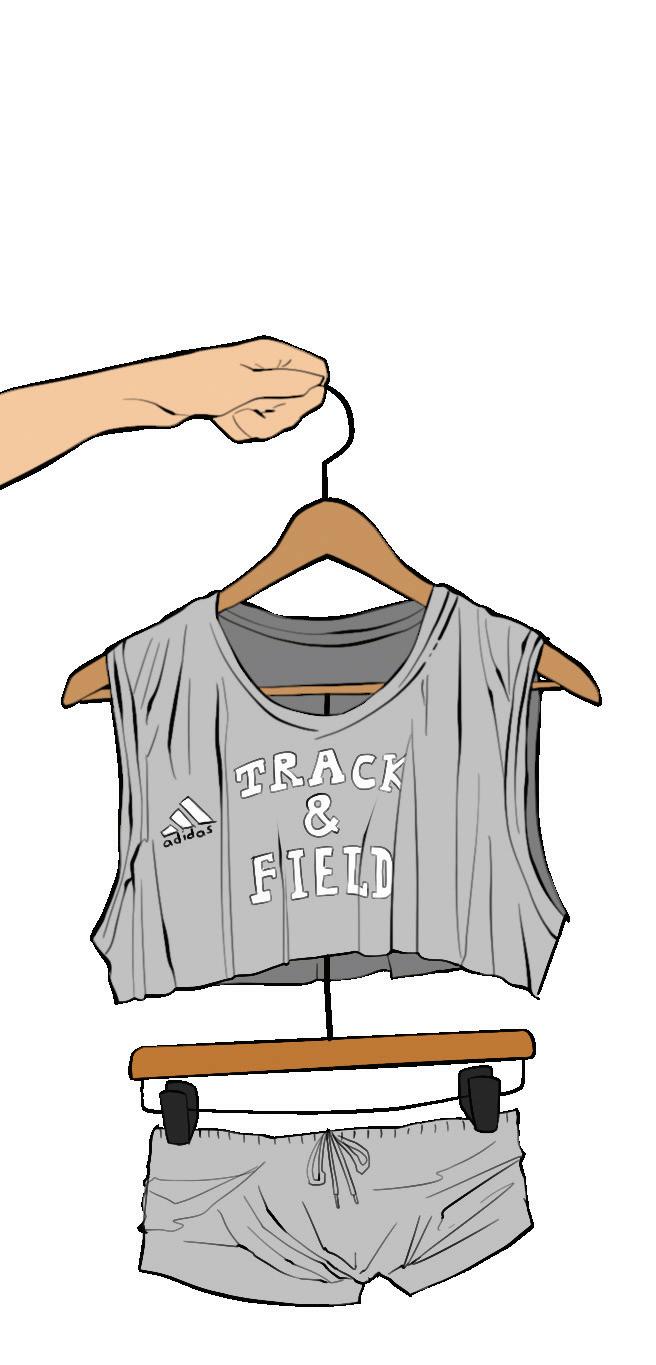
seeing how different the
doesn’t stem from the uniforms itself, but rather people’s expectations and preconceived notions.
“A lot of uniforms for female sports can be not provocative or sexual at all,” she said. “I think the issue is that men’s uniforms are so (full coverage), that when people see female uniforms, they automatically assume that it’s because we want to sexualize ourselves.”
Badminton athlete senior Arden Lee notices this phenomenon within his sport, and attributes the shorter, tighter uniforms for women to the fact these sports are more male-dominated and caters to a male audience.
“I think the reason why the uniforms tend to be more formfitting or revealing is to appeal to the male audience,” he said. “Men like to see women they find attractive play sports, so if the uniforms are more revealing, then male viewership might have better retention.”

Although women in Lee’s badminton community can opt to wear normal-length shorts and shirts, which is accepted within the community, they have no control over the clothes they receive when playing for the
“I receive clothes that I don’t have control over, like whatever they send me I have to wear,” Lee said. “So I know for women, it might be frustrating when they only receive shorter shorts and tighter shirts. I wish they had a little bit more free reign in requesting (uniforms) they feel comfortable to play in.”
Additionally, both Alishahian and Brembilla notice a potential danger in involving young girls especially in performance sports that are hyper-fixated on a perfect appearance, despite some regulations in place such as restricting a visible midriff for cheer competitors under 12 years at age.

“I see some of the small youth teams and it’s like, even if they have to wear a middle piece, they will have to wear a ton of makeup, be all perfect, dolled up, and like put in this box,” Brembilla said.
Alishahian echoes this sentiment.
“Young girls are very sexualized, no matter what sport they do,” she said. “I feel like there’s always a mentality of predation, because people just view it that way. In general, girls are pushed towards being sexy and wanting to appear more mature. I think that idea also translates across
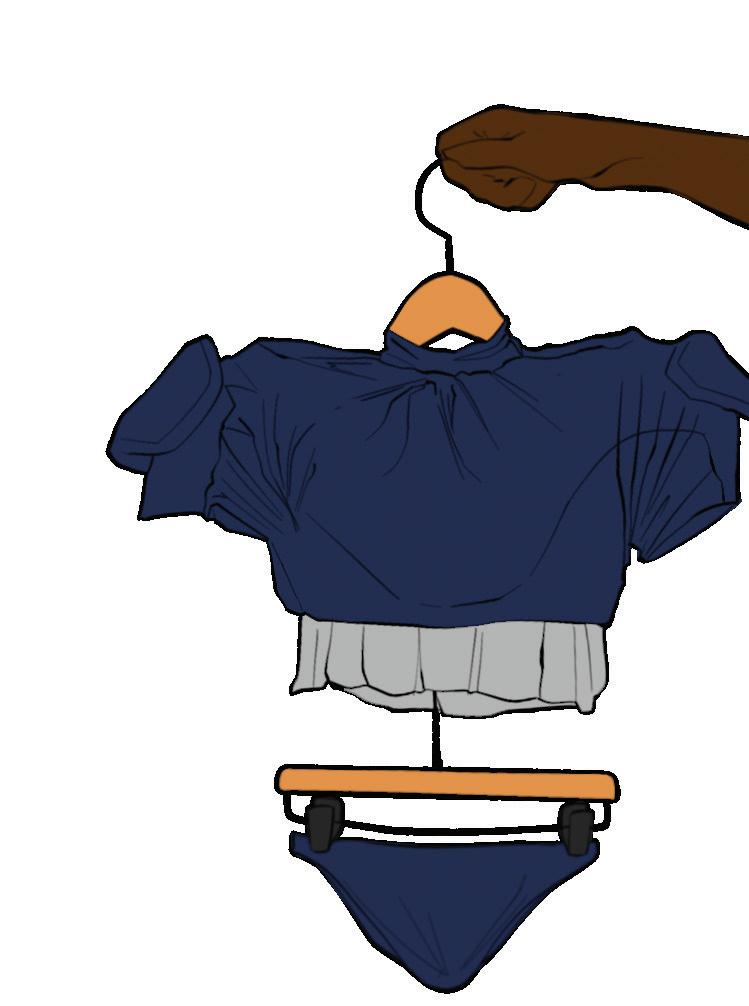
—Written by Kaylee Cheng
Referees are a vital component of any high school sports game. They’re the ones who signal the gamewinning touchdown during the big homecoming game, the last-second shot that goes in at the end of basketball senior night and the goal the soccer team scores right before halftime. Recently, though, school districts have struggled to find referees, threatening many athletic events.

According to Athletic Director Justin Halas, some of the reasons for the referee shortages include negative fan behavior such as verbal abuse, low pay and declining recruitment. A survey conducted by the National Association of Sports Officials in 2023 found that 50% of surveyed officials felt sportsmanship worsened after the COVID-19 pandemic. Although competitive sports can become heated, Halas advises that audiences,
players and coaches should be treating the referees better as a bare minimum.
“You can disagree with calls,” he said. “That’s part of the game, but do it respectfully. That’s all that (referees) are asking for. It’s a tough job — I’m glad they do it.”
To allow Gunn athletic competition to happen safely and even at all, there must be a sufficient number of referees. They ensure all the rules are followed and play a big role in protecting athletes. Athletic Trainer Gagan Cheema admits that the referee shortage is worrying because the presence of referees allows for students to participate safely.

moments, but when it’s a Thursday, it just feels so weird.” Halas voiced his concerns on the shortage’s impacts on games due to the necessity of referees.
“The hope is that we do not continue with the shortage and that it doesn’t get any worse, because (referees) do play a big part in helping us keep an eye on all the athletes and the safety of our students,” she said.
Due to referee unavailability, the football teams, which typically play on Fridays, has had many game days changed to Thursdays and Saturdays. Senior Andre Lee, one of the varsity football captains, shared his disappointment on behalf of the team.
“It just sucks because our senior night is on a Thursday,” he said. “It sucks for us because the next day we have to go to school. As a senior, you know, I try to cherish all these
“(It’s) definitely a widespread issue,” he said. “There’s constantly cancellations, delays, nonscheduled officials. We need officials to get these games played. We don’t want to delay them. We don’t want to play games back to back to back, and we just want to get everybody on the same page: we’re here for the kids to play.”
—Written by Ezra Rosenberg
Water polo is making waves this season, with all teams competing in Division 1, the highest division, of the Santa Clara Valley Athletic League. Despite losing three graduated seniors in both boys and girls varsity, each showcased new talents this year with a record of 6-15 for boys and 9-12 for girls. Boys varsity co-captain senior Parker Ballew, a starter sprinter, describes this season as hopeful.
“We just need to beat a couple of teams under us, and to do that, we’ve been doing pretty well,” he said.
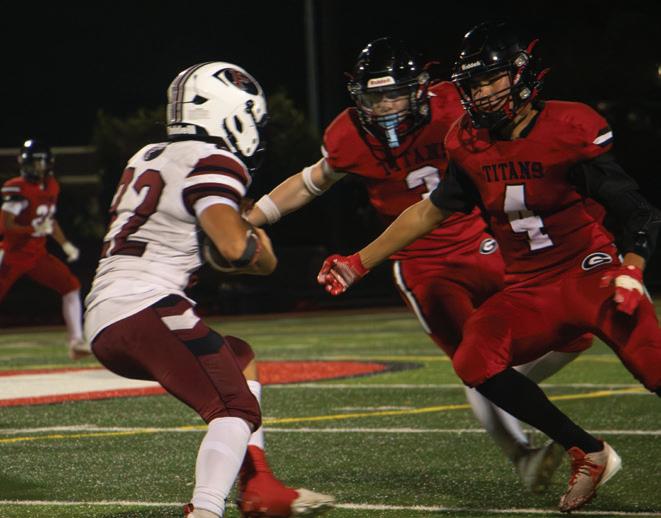
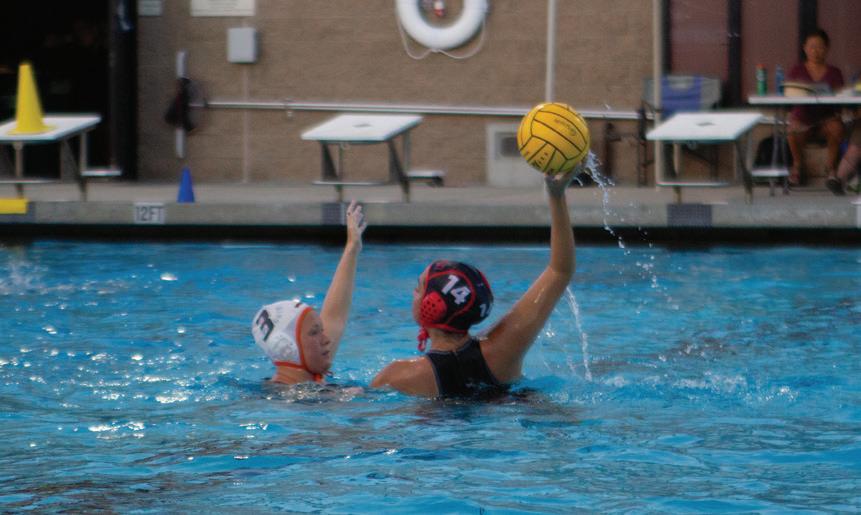
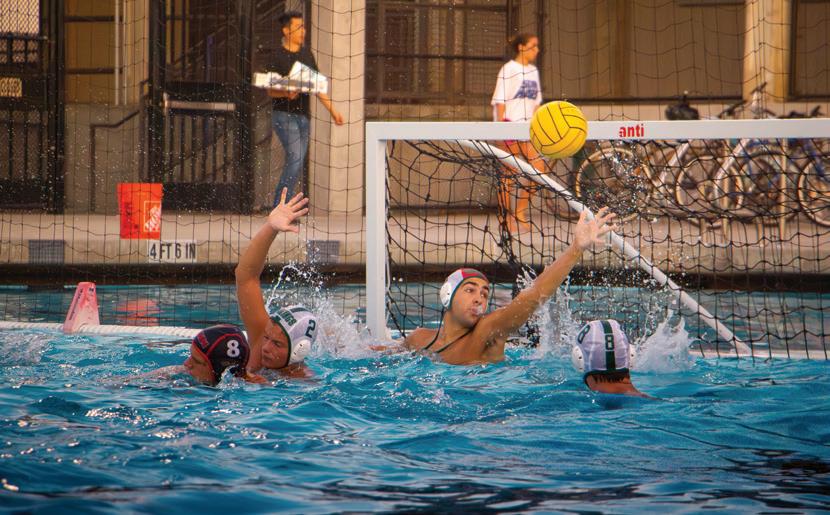

Driven by their coaches’ high expectations and routine pasta feeds before meets, cross country runners competed in Division 2 of SCVAL. In his first exposure to long-distance running, freshman Jeremiah Magallon Obeso is proud of the team’s energy.
“The team spirit’s really high, because no matter what level you are at running, everyone’s gonna be there to cheer you on,” he said.
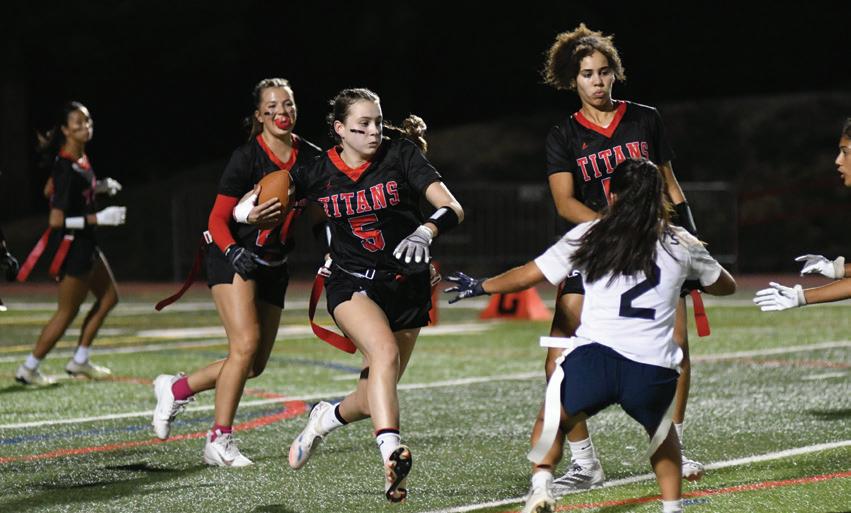
Football scored touchdown after touchdown in Division 2 of SCVAL with a varsity record of 2-5. Through new player assignments, refining strengths and gaining wins, the team is fueled with ambition and energy. Free safety and wide receiver junior Keith Lopez described how excited the team is.
“(Team spirit) is very high,” he said. “We want to do good when we’re all confident. I want to go undefeated next year.”

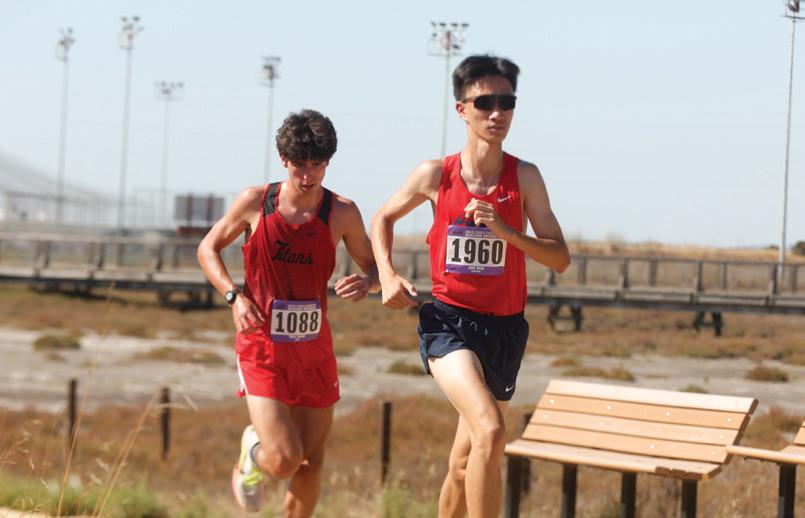
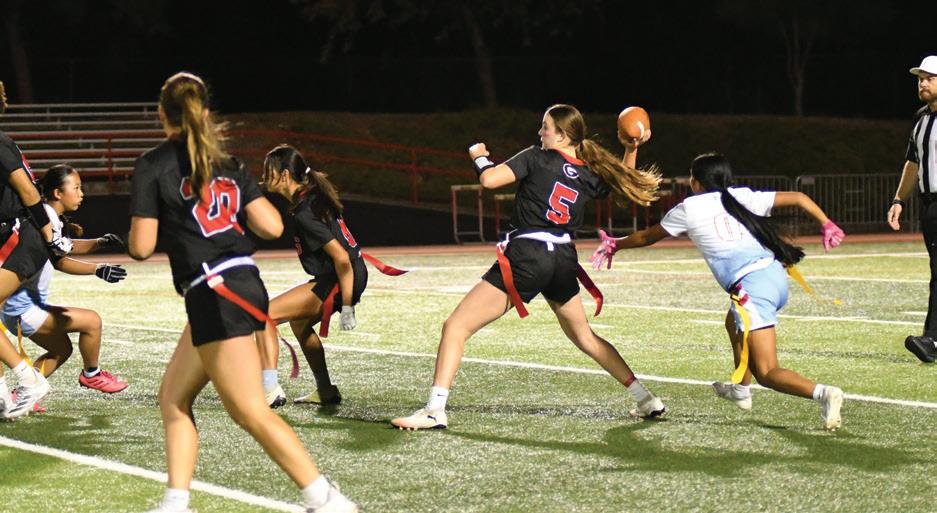
Girls tennis served up the victories, competing in Division 2 of SCVAL with a varsity record of 11-5. Increased communication and organization has led to more bonding activities such as dress up themes and social media publicity. Varsity doubles player junior Mira Rohatgi has future goals to increase team chemistry.
“For next season, (a goal is to) maintain how close the team is, and one goal I have for the off season is making sure we’re still bonding and interacting (with each other),” she said.
Whether players are participating in themed dress-up days or singing their hearts out at karaoke-ice-cream-social nights, team chemistry runs high in flag football. Competing in Division 1 of SCVAL with a varsity record of 9-13, varsity captain senior Aliya Sidhu is proud of the team’s flexibility.
“Adjusting to (a new coach) was a little bit difficult,” she said. “Figuring out jerseys and making sure everybody has the right size and learning the new rules was (also) a challenge.”
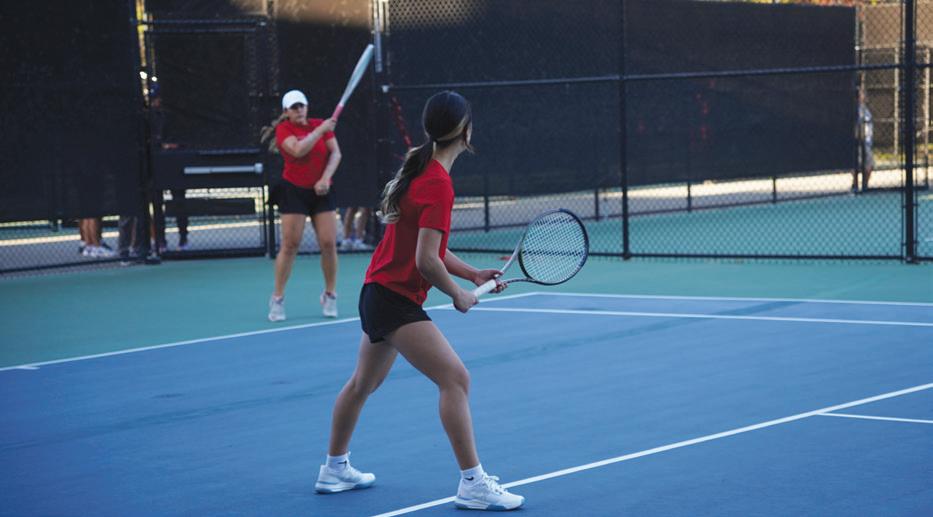

Girls golf drove success right off the tee in Division 1 of SCVAL, reaching a varsity record of 4-5. After months of dedicated practice in the Baylands and matches across the Bay Area, freshman Ellie Hu notes the team’s progress.
“We’ve all improved our scores, so we’re shooting better,” she said. “We’re being more accurate (and) hitting straighter and farther.”

Girls volleyball smashed the competition in Division 2 of SCVAL with a varsity record of 18-15. With new coaches and high spirits, the team improved on offense and coordination. Defense specialist freshman Anika Kasinadhuni emphasized the importance of energy.
“(We have) pretty high spirit for the games,” she said. “If we’re not feeling the spirit, we lose. Leadership and mentorship from the sophomores (also bring everyone together).”
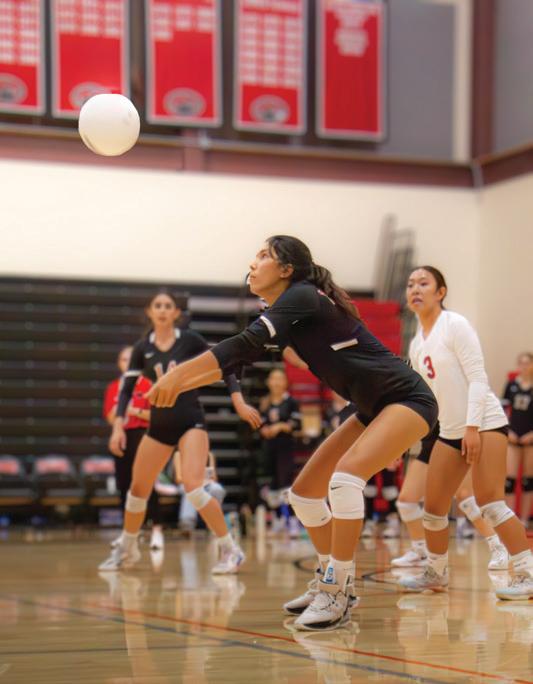
Any reader will affirm Emily Dickinson’s quote about literature: “There is no Frigate like a Book / To take us lands away.” National Book Month has continued this long-standing appreciation for the written word.
In 2003, the National Book Foundation declared October as National Book Month. This observation is meant to highlight the importance of reading, writing and literature, honoring outstanding authors and books with the annual National Book Awards, also hosted by the foundation. On Oct. 7, they announced the finalists for each of the five categories: fiction, nonfiction, poetry, translated literature and young people’s literature. The winners, to be announced Nov. 19, receive a $10,000 prize. Previous winners include “Slaughterhouse-Five” by Kurt Vonnegut, an anti-war science fiction novel, and “The Absolutely True Diary of a Part-time Indian” by Sherman Alexie, a novel of a young boy growing up on the Spokane Indian Reservation.
The British equivalent of the National Book Awards, the Man Booker Prize equally esteemed in literary circles. The winner, to be announced Nov. 10, receives a £50,000 prize, roughly amounting to $67,000. Previous winners include “Life of Pi” by Yann Martel and “The God of Small Things” by Arundhati Roy.
Though the National Book Awards and the Booker Prize are major honors, the pinnacle of achievement is undoubtedly the Nobel Prize in Literature. Instituted by Swedish inventor Alfred Nobel, the annual prize awards $1.2 million of Nobel’s fortune to the laureates of each prize. In his will, Nobel entrusted the Swedish Academy — an organization established in 1786 to promote Swedish language and literature — with the task of choosing “the person who shall have produced in the field of literature the most outstanding work of an idealistic tendency.” It awards authors and their overall contributions to literature rather than individual books, setting it apart from other prizes. This year, on Oct. 9, Hungarian author László Krasznahorkai received the prize for what the Academy called “his compelling and visionary oeuvre that, in the midst of apocalyptic terror, reaffirms the power of art.”
Yet sometimes, art’s impact is not revered and rewarded, but feared to the point that some states and school districts have barred educators from teaching certain books. According to free speech non-profit Poets,

Essayists, and Novelists America, in the 2024-25 school year, there were 6,780 cases of book bans across 23 states. Since July 2021, there have been 22,810 cases of book bans across 45 states. In California, Governor Gavin Newsom signed AB 1078 in 2023, a law that prohibits book bans and textbook censorship in the state. Additionally, Banned Books Week draws attention to the dangers of censorship and calls for free access to all books. In accordance with this week, assistant librarians Megan Garcia and Monica Casey created a display in the library to highlight banned books available to check out at Gunn. Librarian Daljeet Gill says educating students about the realities of censorship is important.
“There are some places where this would be a lot more difficult and some of these books wouldn’t be able to be checked out, unfortunately,” he said. “Students need to be aware that other kids aren’t necessarily able to access these books as easily as (we) are.”
To avid reader junior Ellie Chang, reading is both a form of relaxation and a way to broaden her horizons. She believes that what books to read should be entirely the reader’s choice.
“You can’t force (readers) not to read the book,” she said. “If they don’t want to be exposed to those ideas then they just shouldn’t read it. They shouldn’t have that choice made for them.”
These ideas diffuse into the everyday lives of students in another way: the books they read in class. This year,
English teacher Jordan Wells is teaching “Like Water for Chocolate” by Laura Esquivel, which has been banned in Arizona for sexually explicit content. In the past, Wells taught other challenged novels like “Lord of the Flies,” “I Know Where the Caged Bird Sings” and “Of Mice and Men.”
“(Books) happen to get banned because people fear what they don’t know, and I think books are an amazing way to learn about other people and learn about other people’s experience,” she said. “People fear what they don’t know and we’re reaching out for what we don’t know because reading is an excellent way to build empathy. The world needs a lot more of that right now.”
Students need to be aware that other kids aren’t necessarily able to access these books as easily as (we) are.
The most challenged book in 2024 was “All Boys Aren’t Blue” by George M. Johnson, a memoir of growing up as a Black queer boy. According to PEN’s report, LGBTQ+ identities are often conflated as being “sexually explicit.” This claim is used to justify banning these books, including “The Color Purple” — a book Wells has taught — which features a character exploring her sexuality and forming a relationship with another woman.
The debate over books is intense: Some seek to protect them from censorship, while others push to ban. Books appear harmless, yet they hold immense power. As Dickinson observed at the end of her poem: “How frugal is the Chariot / That bears the Human Soul.”
—Written by Melody Song
2025 National Book Awards finalists: https://www.nationalbook.org/2025national-book-awards-finalists-announced/
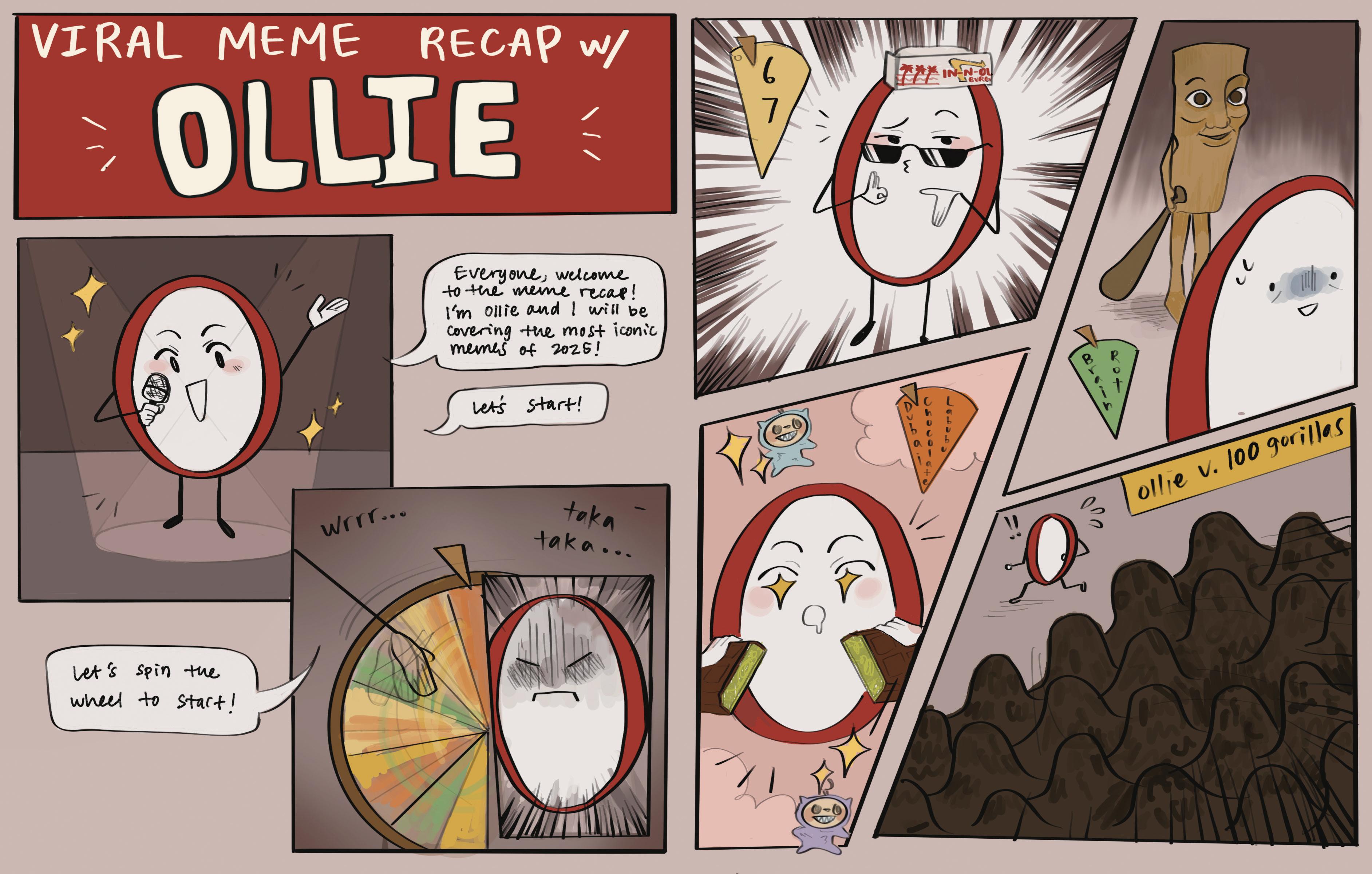
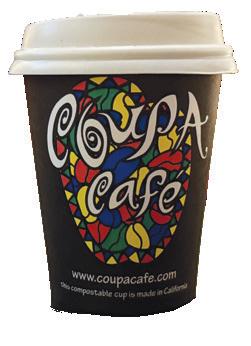
For all the coffee lovers out there, Coupa Cafe sheds a new light on the perfect pumpkin spice latte. The silky consistency of espresso combined with the punches of caffeine flavor leaves a delicious bittersweet aftertaste. While the drink could benefit from more pumpkin the spiced aroma is heavenly. Whether paired with a delectable fall pastry or bought for the seasonal jolt of caffeine, this drink adds to the cozy autumn aesthetic we all know and love.
—Written by Mayher Dulani

My attempt at a pumpkin spice latte — using Inspired Taste’s recipe — went horribly wrong. After an initial taste test with frustrating results, I added my touch of expertise: more pumpkin, cinnamon and sugar, crowned with a mountain of pumpkin spiceflavored whipped cream. When The Oracle staffers reviewed my drink, some loved the bold flavor, while others described it as too sweet or salty. No matter what the reviews say, my drink is special on one level alone: it’s homemade.
—Written

by Athena
Gao

Summer slips away with its last beams of light, ushering in the crisp air of fall. As scarves wrap tighter and daylight gets shorter, try these activities to make the season feel fuller and more memorable.
Arts and crafts are a must. Jack-o’lanterns, carved with patterns ranging from spooky to silly, are a classic way to set the right mood for Halloween. Candle making, a less goopy alternative, brings the seasonal warmth, nostalgia and coziness through the flickering amber light and fragrant scent. Make your own fall candles with organic materials using botanicals, cinnamon sticks and pinecones for decoration, and add various fragrance oils like pumpkin spice, apple cinnamon and vanilla. Creating autumn wreaths, assembled with dried leaves and flowers, pinecones and mini pumpkins, is another great way to celebrate fall.
For a timeless fall tradition, try apple picking. It’s the perfect activity for exploring colorful orchards, collecting fresh apples and relishing the scent of ripe fruit. Among the many varieties of apples grown in California, there is a trio known for its distinct sweet flavor and crisp texture: Gala, Fuji and Honeycrisp. Local spots such as Andy’s Orchard in Morgan Hill and Clearview Orchards and Gizdich Ranch, both in Watsonville, offer wonderful experiences where orchard visitors are bound

A fusion of rich pumpkin flavor, cinnamon spices and sweet whole milk, the Peet’s Coffee iced pumpkin spice latte is the ultimate fall drink. It’s less bitter than Starbucks, more pumpkin-packed than Coupa, but unfortunately, a lot lighter on the whipped cream than the homemade version. All things considered, the next time you’re at Peet’s Coffee, indulge in this cozy drink.
—Written by Yael Gottesman

With a warm cup on a chilly Monday morning, I found exactly what I was looking for in Starbucks’ pumpkin spice latte: A burst of espresso, with a modest taste of pumpkin and the perfect level of sweetness. Each sip of pumpkin coffee has a touch of whipped cream, making the cinnamon-topped drink perfect for a girl getting through college applications this fall. The morning drive to get it before school — and a few tardy minutes — are more than worth it, with apologies to first- and fifth-period teachers.
—Written by Gwen Domine
to come home with apples ready to be baked into seasonal goods to savor with your loved ones, including apple tarts, turnovers and cobblers. Pumpkin patches — like Webb Ranch in Portolla Valley and Lemos Farm in Half Moon Bay — special places where you can immerse yourself in a sea of various vibrant and earthy hues of orange. The countdown is on when hunting for the favorite one to decorate or cook into a scrumptious pumpkinflavored treat. These patches often offer petting zoos with adorable farm animals that make hearts melt. Although it can be quite a niche activity that involves sensory experiences, petting fluffy bunnies, combing a pony’s mane and holding a handful of baby chicks offer a moment to unwind.
—Written by Melody Na


What’s up, music fanatics! It’s DJ Fall Feels coming at you with songs for autumn. Music is the best way to get into spirit, so here is a mix of popular and hidden gem tunes for the cozy vibes.
Sliding into jazz, we have “Paradise” by Sade. You might recognize this artist’s name from “Smooth Operator,” but this song is just as smooth and satisfying.
“Landslide” by Fleetwood Mac is another. Everything about this beat makes me want to grab a pumpkin spice latte, crack open a book and curl up in a blanket. Nothing gets you quite in that fall mood like Fleetwood Mac.
As the leaves change color, nothing is superior to cozying up by the fireplace with the perfect fall comfort show. For me, that will always be the nostalgic 2000s drama “Gilmore Girls.” The main characters Lorelai, a stylish single mother, and Rory, her smart and sarcastic daughter, are emblematic of a unique dynamic shaped by their small age gap: best friends first, mother and daughter second. Their opposite personalities are perfect complements, contributing to the comedy, romance and 2000’s fall feel of the show.
As the two stroll through the town in cute boots and scarves with coffees in hand, the fall aesthetic is conveyed in a unique and intimate way. Even as the environment around us changes, the show holds its place as a testament to my autumn ritual — because nothing screams fall like watching “Gilmore Girls.”

—Written by Mayher Dulani
With one very famous former resident — yes, Steve Jobs’ house is here — Old Palo Alto is Halloween gold. Children walk away with candy bags heavier than a MacBook, while millionaire parents try to outdo each other with scare actors and blown up projected images on houses. It’s the one night the neighborhood’s best PTA mom competition works in kids’ favor: who can serve five-star treats and Michelin-level pumpkin carving?

Charlie Brown, the star of “Peanuts,” a famous TV series, has been bringing warm autumn vibes to viewers around the world since 1966, when the classic movie “It’s the Great Pumpkin, Charlie Brown” debuted on TV. Good ol’ Charlie Brown returns to the screen every year as his loveable and adorably confidence-lacking self. He and his friends spend their Halloween trick-or-treating, partying and camping out at the local pumpkin patch to get a glimpse of a mythical creature — will Charlie’s friend Linus lay eyes on the Great Pumpkin?
I flew through Lauren Wolf’s historical fiction novel “Wolf Hollow” in one sitting, and it made me want to light a candle and drink a large mug of peppermint tea. If you’re an avid historical fiction fan, or enjoy reading novels that are a perfect blend of beauty and suspense, this book is for you.
It follows 12-year-old Annabelle McBride’s life, which is peaceful until Betty Glengarry, a vicious bully from the city, joins her class and targets Annabelle and her younger brothers. This novel is a perfect fall read, with its detailed descriptions of the tense, October atmosphere and the suspenseful tone truly depicting poignant events. Be sure to add it to your bookshelf this autumn!
—Written by Annabel Brown
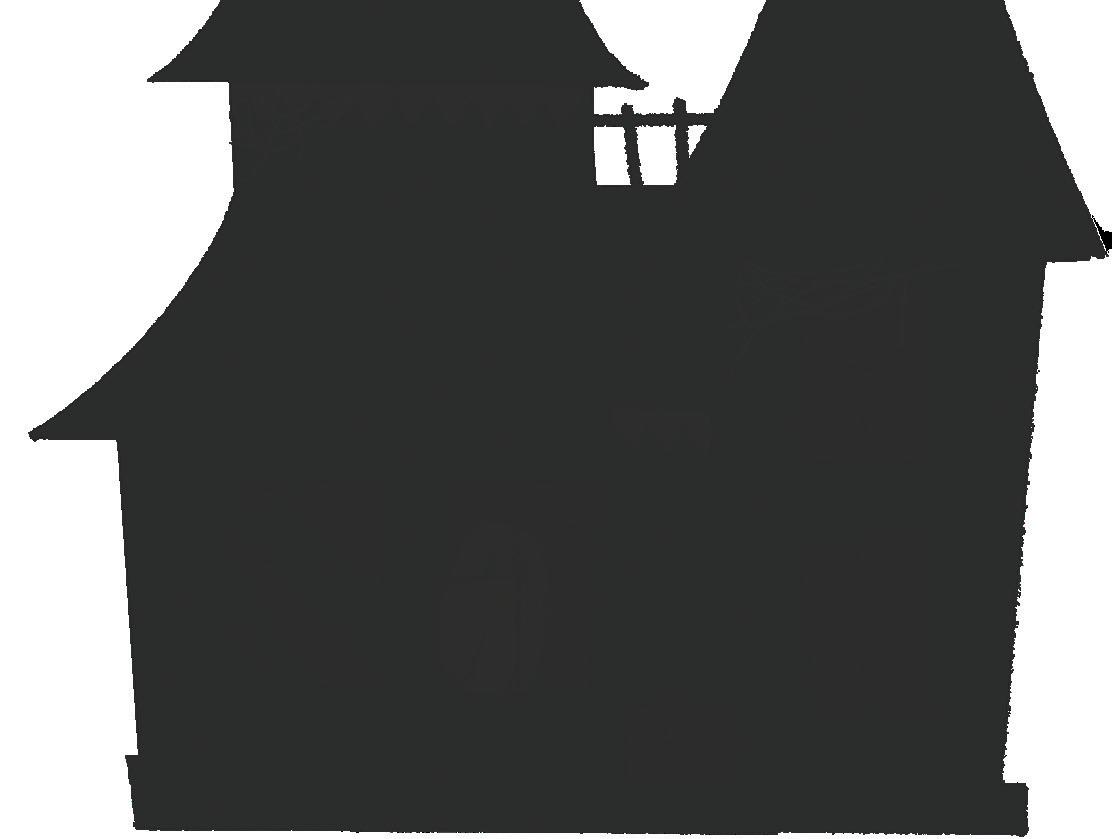



1. Oohs and ___ 2. Fiber source
3. Indicates the end of lunch
4. Language taught at Paly abbr.
5. Without exception
6. Movers and shakers
7. Busy as ___ (2)
8. Like some genetic laws
9. Sinatra’s 1950s entertainment group
10. Double-reed instruments
11. Monaco casino (2)
12. Girl of Green Gables
13. ___’___; not ever
18. Antony famously did after Caesar’s death
23. Many a Punjabi identify as ___
25. Four-sided fig.
26. Take ___ at it
27. In ___: before birth
28. Famously enamored by one million dollars
29. “___ there yet?” (2)
31. Haunted house sound
32. God
34. Travels through 37. Walked on
38. Tons (2)
40. Expand
41. Strike ___ (2)
44. Soloist from a murder of singers?
46. Clean power org.
47. Canadian actress Katic
48. Mathematician Turing
49. Pitcher Hideo
51. Frozen drink brand
52. Cleveland’s Great Lake
53. Arrive
54. Has debts
miny, moe”
Follows the AMC
Batman trilogy director
57. Calculator type recently banned on the SAT
Finished the crossword? Come to P-115 during lunch or 5th period with your completed puzzle to collect a prize!
On Halloween night, ghosts and goblins come out to play — but in the days before, it’s people’s credit cards that haunt them as they pay for their single-use costumes.
According to the Yale Sustainability website, almost 85% of Halloween costumes end up in the landfill and about 83% prepackaged costumes are made of oil-based plastic materials, which do not decompose easily due to their chemical structure.
Style Swap Club social media manager junior Nyla Wang encouages students to consider the environmental harms when costume shopping.
“I think it’s really important to be sustainable when creating Halloween costumes, because most (Halloween costumes come) from stores and are made with cheap materials (such as) polyester and nylon,” she said. “(These materials) take hundreds of years to break down, and they’re only worn once, so (they) just end up making a lot of waste in the environment.”
The high demand and mass production of costumes can contribute to exploitative labor practices when factories require laborers to work 16 hours a day to reach production quotes. Many of these factories take advantage of child labor and adhere to the explotiative laws in place. According to research from George Washington University Law School, around 75 million factory workers are employed globally, with roughly 2% living with wages above the poverty line. This cycle contributes to generational entrapment, as child labor is often used for these low-skill tasks. Children are exploited for profit while earning little to nothing in return. Companies take advantage of locations such as China and India, which produce a lot of worldwide goods and pay workers just one-fifth of what is required to afford basic necessities. The popularity of single-use costumes helps encourage further
unsustainable production and exploitation.
For sophomore Nia Sharma, textile waste isn’t in her plans this Halloween. She emphasizes the importance of recycling old costumes and reusing what she already owns to create her look this year.
“This year I’m being a bunny for Halloween, and I got my stuff off of Depop because I wanted to avoid ordering from fast fashion sites,” she said. “I’m also going to Gunn’s Halloween costume swap (on Oct. 29) to see if there are any extra pieces I can add to my costume.”
Green Commissioner senior Doyoon Kim works to help Gunn’s community minimize waste through initiatives like the Hoco Spirit Swap where students are able to bring in old spirit gear to receive new items. Some accessories and clothing items can be recycled into costumes, sustaining a cycle of reuse.
“I think in the process of advertising the (costume) contest, we could also mention, sustainable options, (an example being) make your own costumes out of what you have, like cardboard and your own clothing,” she said.
Along with the Student Executive Council and the Green Team, clubs within Gunn such as the Style Swap Club has been working to mitigate environmental impacts at a community level through creative, sustainable initiatives. Recently, they organized a last-minute Halloween Costume Swap, where students traded in old costume pieces or sets to receive new ones free of cost. The club also encourages students to consider more sustainable options for future events, such as purchasing costumes secondhand from thrift stores.
Barron Park feels like Palo Alto’s countryside — if the countryside had Teslas and trick-or-treaters in astronaut suits. It’s a tight-knit, familyheavy neighborhood where every other house has kids darting between driveways. Parents chat over cider while toddlers wobble in pumpkin costumes. There’s also the bonus: Bol Park’s famous donkeys join the fun.

—Written by Lena Duggan

—Compiled by Claire Jittipun

for efficient candy

perfect for strategic younger kids or lazy teens in onesies. Retired grandparents and really little kids will be found handing out a variety of treats. It’s the kind of Halloween that feels homegrown — nostalgic, safe, and exactly the right amount of chaotic.

Alumni Lisa Hanawalt (‘01) and Raphael Bob-Waksberg (‘02) move onto ‘Long Story Short’
The critically-acclaimed Netflix-animated adult series “BoJack Horseman,” following the life of a selfdestructive former TV star and talking horse, launched creator Raphael Bob-Waksberg and production designer Lisa Hanawalt — Gunn ‘02 and ‘01 alumni, respectively — to stardom.
Bob-Waksberg and Hanawalt initially met at JLS Middle School, but their friendship sparked during Gunn Theatre, when Bob-Waksberg casted Hanawalt in “The Family Continues,” a one-act play he directed as a teen.
“We did plays, and we used to hang out in the Green Room in Spangenberg,” he said. “During our free periods — or maybe we were cutting class, I don’t quite remember — she would draw pictures and I would make up voices for them. We never knew we were going to make a cartoon one day. It didn’t feel like a real thing we could do. But we remained friends, and then the opportunity came to make a TV show together. And now we’ve made three together.”
In addition to her experience in theatre, Hanawalt pursued making art all her life, laying the foundations for her careers as a cartoonist, show designer and creator of her own series.
“I just compulsively made art ever since I was a little kid,” she said. “I would draw during class a lot and sometimes get in trouble for it, but I couldn’t stop. I was kind of shy, but it was a way I could express myself before I started doing theater, (which helped me come) out of my shell a little bit.”
Hanawalt collaborated with Bob-Waksberg on “BoJack Horseman,” which was nominated for three Primetime Emmy Awards. Bob-Waksberg emphasized that their personal rapport helped their creative process flow naturally.
“In the early days of BoJack, I had to explain what the show was to so many people, and I feel like Lisa always got it because she knew me so well and she understood what I was about,” he said. “It’s really helpful to have the people who know you.”
Throughout his work on the episodes, BobWaksberg transcended the conventional boundaries of adult animation, blending absurdist comedy with raw explorations of deeper, emotional realities.

and more to play with. And B: Our audience would go with it as well. And I think if you’d asked me beforehand, I might’ve assumed, well, if you want to do something that’s funny and serious, it can’t be too funny or too serious. We really found the opposite was true. The goofier we go — the farther we go in a silly direction more introspective.”
After the last season concluded, Bob-Waksberg helped Hanawalt produce her own animated show, “Tuca and Bertie,” which ran for three seasons. After “BoJack Horseman” and a few more projects in between, Bob-Waksberg began his new comedy series “Long Story Short,” about a dysfunctional middle-class family in the Bay Area, which Hanawalt eventually became a supervising producer and designer for. The show premiered on Netflix in August 2025.
“I almost didn’t go to her because I thought, ‘She’s a show creator (of) her own right now — she’s not going to work on my thing anymore,’” Bob-Waksberg said. “(I wanted to) at least ask her just to see if maybe she could recommend a friend who would be good for it, and she was like, ‘No, I’d love to (work with you).’ That was a dream. It’s really fun for me that I get to work with this friend that I’ve had for over 20 years now, and I feel like we have a shorthand because we know each other so well.”
When shifting to “Long Story Short,” Bob-Waksberg adapted to the cadence and logistics of the new show.
“(‘Long Story Short’) works differently than any show I’ve done before, so I (had) to learn how to write the show, the grammar of (it) and what makes (a) season of this show,” he said. “(It does not have) the same as the rhythms of a season of ‘BoJack’. We’re like figuring it out as we go, and that’s really fun.”

of childlike or like old ‘Peanuts’ cartoons. That really popped into my head right away. Having a strong concept and going really hard in that direction (allows the show to) look unique from other work that’s out there.”

Rather than directly retelling Bob-Waksberg’s upbringing, the show contains fragments loosely inspired by his experiences growing up in a Jewish family in the Peninsula.
“Some of the rhythms are very autobiographical or feel like the way my family interacts with each other,” he said. “In other ways, it’s exaggerated. In other ways, I just made it up. Also, I had a whole room full of writers. We had directors, animators and artists come in, and voice actors also bring their own stuff to it. (It) really is a collaboration. So, it’d be
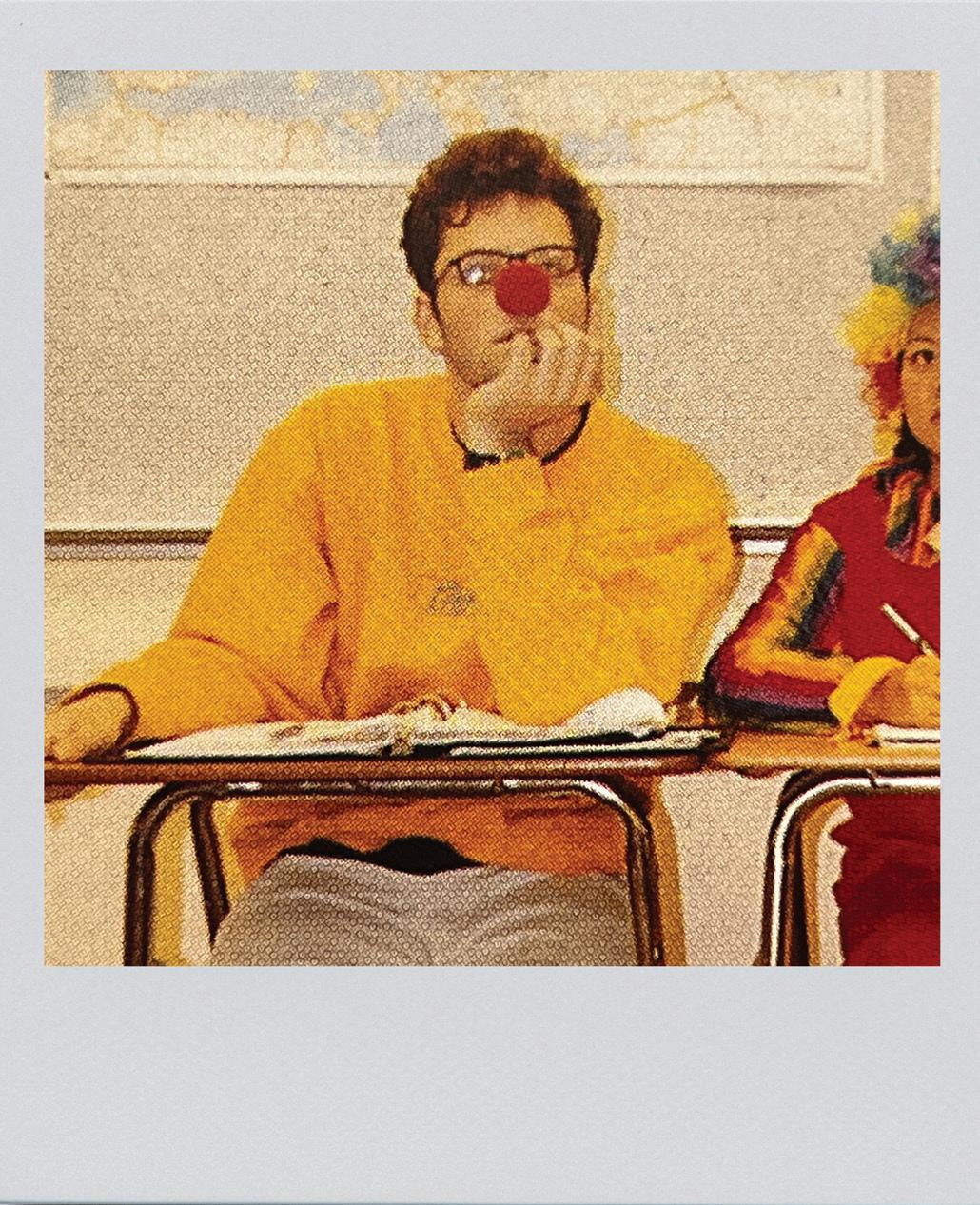

After years of creating these animated worlds, both Bob-Waksberg and Hanawalt hope that audiences can reframe their perspectives and connect to their shows on a personal level.
“I want this to be a show that works for all audiences,” Bob-Waksberg said. “I wanted to hit (audiences) where (they’re) at. I think a good show invites the audience to be an active participant in it, (to) analyze it and consider for themselves how it resonates.”
